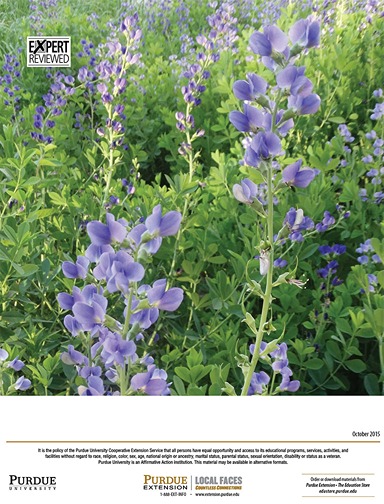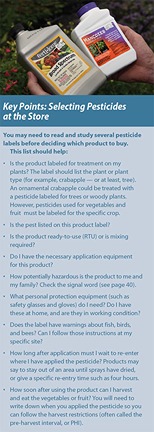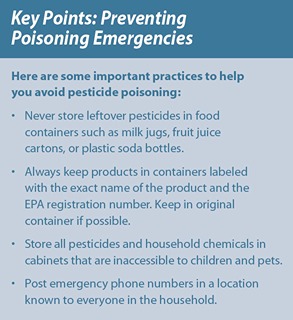
What Gardeners Should Know About Pesticides, A Practical Guide for Home Use
Authors
Fred Whitford, Coordinator, Purdue Pesticide Programs
Gail Ruhl, Senior Plant Disease Diagnostician, Purdue University
Steve Mayer, Educator, Purdue Extension-Marion County
John Orick, Master Gardener State Coordinator, Purdue University
Rosie Lerner, Consumer Horticulture Extension Specialist, Purdue University
Kevin Leigh Smith, Editor, Purdue Agricultural Communication
What this publication will cover:
- Managing Unwanted Critters Around the Landscape and Garden
- Start Healthy and Aim for Green
- Pests Are in the Eyes of the Beholder
- Personalized Pest Management
- Choose Control Options that Fit Your Philosophy
- Pesticides Classified by What or How They Control
- The Label Directs Safe, Effective, and Legal Use
- Check Your Inventory Before You Buy Pesticides
- Selecting Pesticides at the Store
- Be Prepared for an Emergency
- Think Before and During Application
- Finish the Job by Cleaning Up
- Troubleshooting Why It Didn’t Work
- Preventing the Problem From Recurring
- Conclusion
- Acknowledgments
- Disclaimer
Managing Unwanted Critters Around the Landscape and Garden
Effective pest control in the landscape and garden requires more than just spraying away the problem. Successful gardeners understand that managing insects, weeds, diseases, and vertebrate pests starts with selecting, planting, and caring for their garden plants. This publication describes a variety of strategies home gardeners may use to safely and responsibly manage pests and pesticides in the landscape.
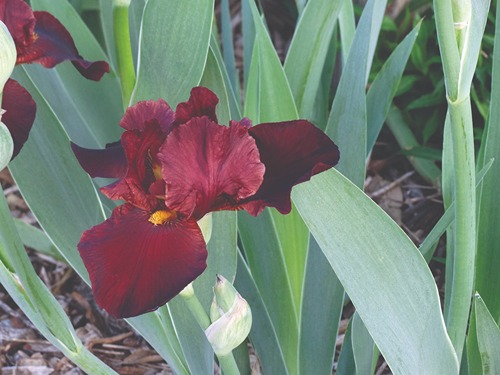
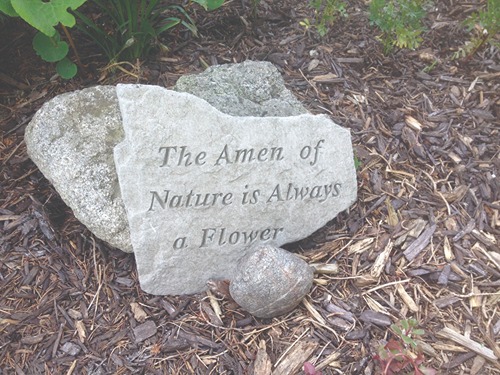
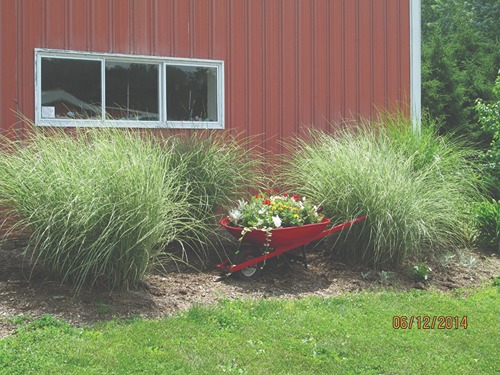
Plants add beauty to a landscape and bring us closer to nature.
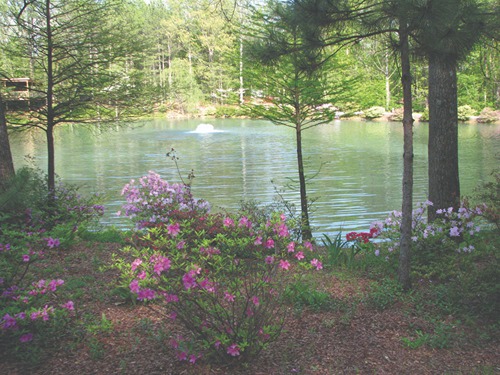
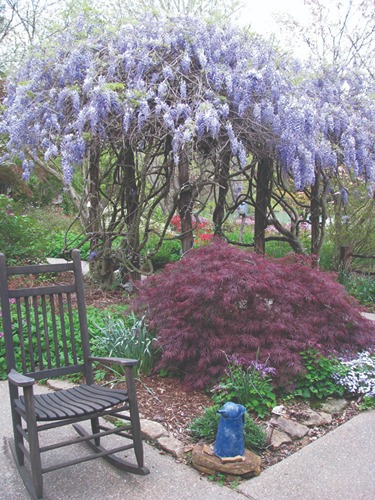
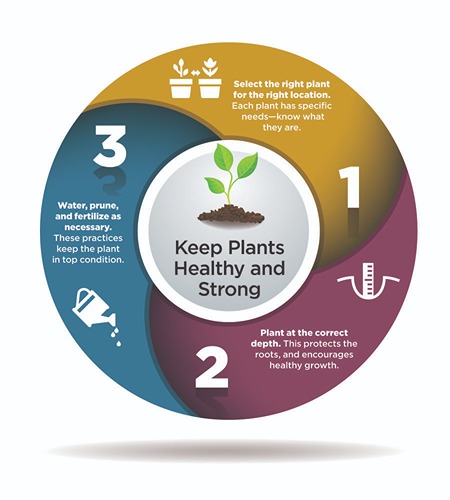
Homegrown vegetables and fruits taste even better when we know they are the product of our own hands.


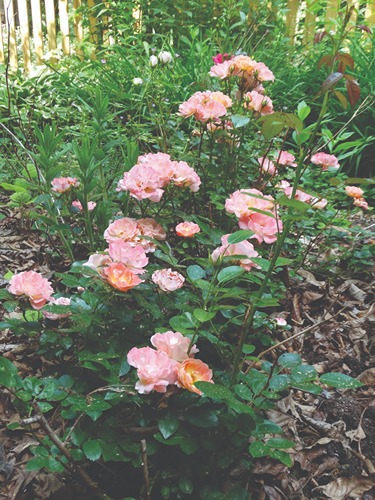
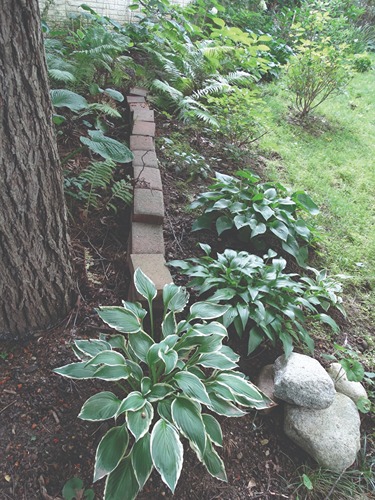
Landscaping your property helps accentuate its appearance. It also adds value.
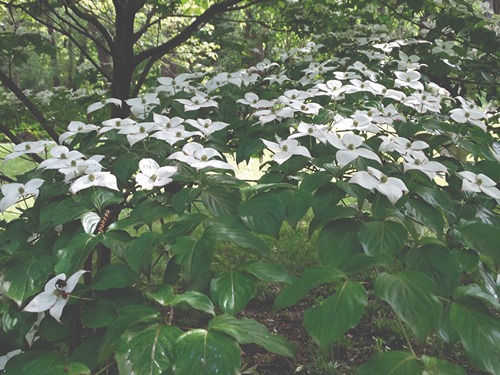
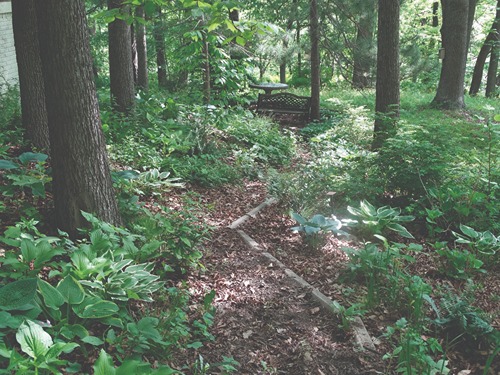


A home surrounded by healthy, vigorous plants helps sell a house.
Early spring flowers are a welcome relief from snow and ice.
WHAT IS THE PURDUE MASTER GARDENER PROGRAM?
The Purdue Master Gardener Program is an integral part of Purdue Extension that trains gardening enthusiasts to assist with home horticulture education in Indiana communities.
The program trains individuals on a wide variety of horticultural topics. In return, participants volunteer to share their knowledge with others through educational gardening activities in their communities.
Learn more about the Purdue Master Gardener Program

Start Healthy and Aim for Green
Fighting pests begins long before you dig that first shovelful of soil. Much of what will happen to your plant started weeks, months, and even years before you noticed any specific pest problem. Here are eight important things to remember when buying and
planting plants. Follow these simple guidelines to increase your success of battling garden pests, including insects, diseases, and weeds.

1. Do your homework, 2. Invest in plants that tolerate regular risks,
3. Read the tag, 4. Purchase healthy plants,
5. Know your soil, 6. Give plants adequate space,
7. Plant them correctly, 8. Water new plants as needed.
1. DO YOUR HOMEWORK
Find out all you can about the plants you intend to buy. Will the plants thrive in the soil and sun conditions where you want to place them? For example, think about the sun requirements for three plants: hostas, garden phlox, and roses. Too much shade for garden phlox and roses may increase the chances they will develop disease. Some hosta species planted in full sun can develop plant problems like sunscald.
Are you willing to invest the additional time and money that certain plants may require?
Some plants do so well that they become a weed in the landscape. It’s also important to consider how aggressive a plant is before you add it to your landscape. Sometimes, you may want an aggressive plant to fill in areas where grass has difficulty growing. However, aggressive plants in the wrong location will spread out of control, which will require additional work to remove the strays that end up in flowerbeds, paths,
and native areas.
There are many excellent books about landscape plants, as well as university extension publications and trustworthy websites. Before you buy, spend a few minutes researching possible problems a plant might bring to your garden or landscape. Are you up to the task of dealing with the problems? If not, choose a different plant.
You can research the plant online, ask your extension office, or speak with knowledgeable garden center staff about the pests that attack each plant. You can also ask if there are plants that can resist those pests. If garden center staff cannot answer your questions, they should have access to reference materials to find how robust a plant can become.
 Vinca minor is a beautiful ground cover that requires little care and can grow in the shade. However, in this yard the plants spread into areas the homeowner does not want them. In the wrong spot, Vinca minor can be invasive since it spreads so aggressively into natural areas. This is why you need to assess any plant for its aggressive behavior or you will end up with a very active weed.
Vinca minor is a beautiful ground cover that requires little care and can grow in the shade. However, in this yard the plants spread into areas the homeowner does not want them. In the wrong spot, Vinca minor can be invasive since it spreads so aggressively into natural areas. This is why you need to assess any plant for its aggressive behavior or you will end up with a very active weed. 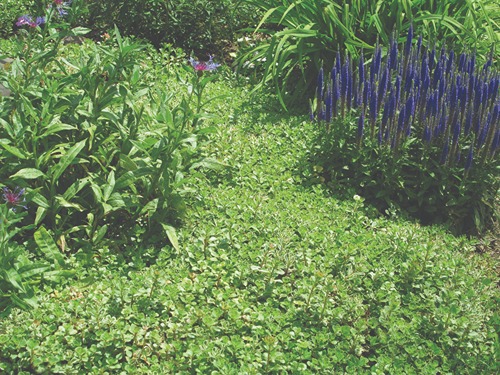 Lamium grows vigorously.
Lamium grows vigorously. 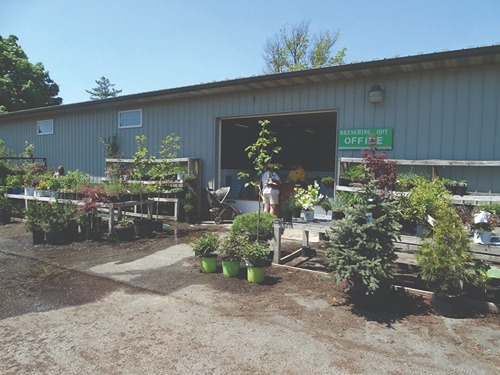
2. INVEST IN PLANTS THAT TOLERATE REGULAR RISKS
Very few plants are immune to insects and diseases, and all plants must compete with weeds for nutrients, sunlight, water, and space. Certain plant species are very susceptible to specific diseases or insects. For example, roses are prone to black spot, lilacs to powdery mildew, lindens to Japanese beetles, hostas to slugs, pears to fire blight, arborvitae to bagworms, and crabapples to apple scab.
Aside from the occasional slug, hostas are often free of insect and disease problems. However, deer love hostas. Thus, the location you want to plant the hostas will determine whether they are a suitable choice.
Garden phlox is prone to powdery mildew, a disease that turns the leaves an unsightly white. This may require regular fungicide sprays. And some rose plants are attacked by a variety of insects and diseases from the beginning of the growing season right up until the killing frost.
If you plant these or other problem plants, you can count on these pests making their presences known nearly every year. Whenever possible, buy plant species or cultivars that are resistant or more tolerant to these recurring pests. While resistant varieties may cost more, plants with built-in genetic resistance will serve you better over the long run, because you will spend less time dealing with pests.
Purdue Resources for Gardeners
FIND MORE INFORMATION ABOUT TAKING CARE OF YOUR YARD AND GARDEN
- Purdue Consumer Horticulture’s website offers a broad range of information, including our biweekly Yard and Garden News column, Purdue Extension publications, informational article archives, and a list of public gardens throughout Indiana.
- The Purdue Plant and Pest Diagnostic Lab helps gardeners accurately identify and
diagnose plant pests. They also recommend ways to manage those pests.
3. READ THE TAG
While it might seem like stating the obvious: a plant tag is meant to educate gardeners about the plant. Tags are specific and provide valuable information about the level of sunlight a plant needs, its preferred soil type, how often it must be watered, how tall or wide it will grow, how it should be spaced, and its cold tolerance.
Think about the last time you went to a garden center just to see what new plants were available. Out of the corner of your eye, a group of plants caught your attention. You were drawn to them like a magnet and quickly searched for the price tag. You probably had a few anxious moments thinking about the price (Is this a good deal? Can I afford this?). Within minutes, you decided to buy it before someone else took “your” plant. You even knew where you wanted to plant it.
But did you also read the other tag? The tag that provides the all-important growing information?
Reading a plant’s information tag is just as important as the price tag. Put a plant in the wrong place, and it will be unhealthy, unproductive, and unattractive. If you don’t read the tag, the plant could die, or always be weak and prone to insects and diseases. In short, make sure the plant is right for the planting location before you buy it.
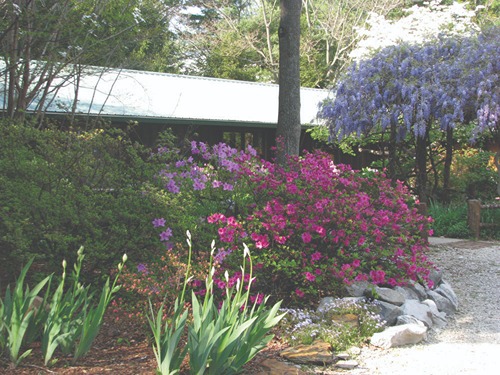
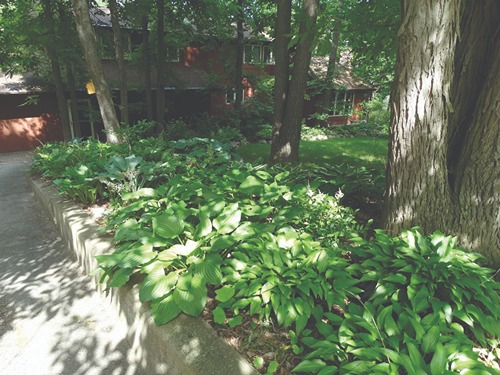

Plants require different levels of sunlight, soil moisture, soil pH, and other growing conditions in order to thrive.
4. Purchase Healthy Plants
Don’t bring pest hitchhikers home with you from the retail outlet.
Check the health of the plants before you buy them. Inspect the foliage. Reject plants that have dead or thin areas, spots on the leaves, live insects, and wilted leaves. Sometimes, plants just don’t look healthy — don’t bother with those either.
You should also carefully remove plants from the plastic pots to make sure the roots along the outside of the root ball appear healthy (most healthy roots are white or tan). Avoid plants with dark, mushy roots. If you squeeze a root and it’s mushy, don’t buy it.
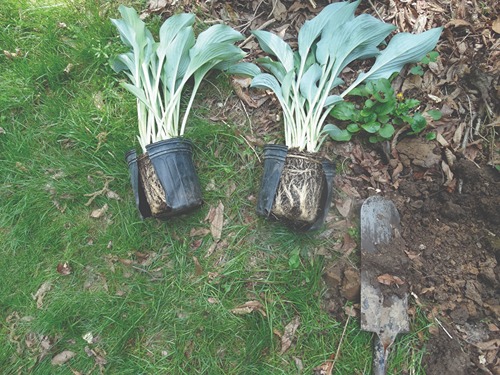
5. KNOW YOUR SOIL
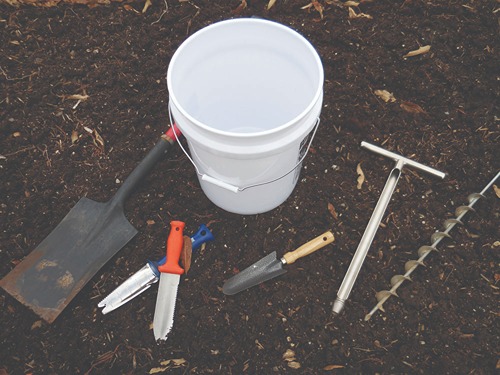
Plants extract nutrients from the soil. If your soil lacks the nutrients a new plant requires, then the plant cannot sustain growth and remain healthy.
Soil pH measures the acidity and alkalinity of soils, which determines how many nutrients are available. Soils can be called sweet (alkaline or pH >7) or sour (acid or pH < 7). If soil pH is high (alkaline or pH >7), then some nutrients are locked up and unavailable to plants.
Test your soil’s pH and nutrient levels. This is a wise investment to help keep healthy plants remaining in the landscape for an extended period. Your county extension educator can help you find commercial laboratories that test soils. Educators also can help you evaluate the lab results.
6. Give Plants Adequate Space
How tall or wide will a plant eventually become? Sometimes it is difficult to imagine that the little plant in a pot or burlap bag will grow 40 feet tall or 10 feet wide. But it’s important to know the final size and plan accordingly. Once again, the plant tag will guide you.A common example of poor planning is selecting the wrong trees to plant under power lines. Although you mow and care for the ground beneath the wires, the utility company (in most cases) actually controls that ground — this is called a utility easement. If you plant trees that grow into the power lines, the utility company has no choice but to trim or remove them, which obviously makes you angry. If you planted off the easement, or chose size-appropriate species, then the trees would have been in a better location.
Planning makes the difference between enjoying the benefits of trees in your landscape and looking at stumps and remembering what once was.
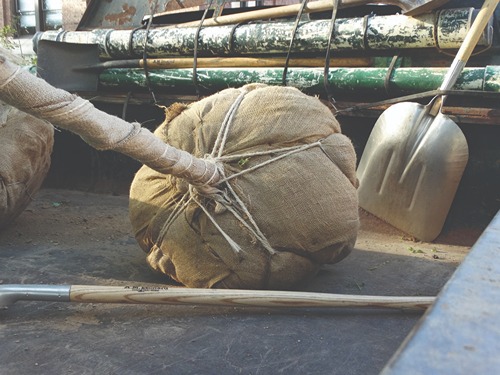
 Certain dogwood species are a perfect choice near power lines, because they do not grow as tall as most trees.
Certain dogwood species are a perfect choice near power lines, because they do not grow as tall as most trees.  Some plants grow too large for their location and can block the view from windows. In the right place, a plant is attractive, but the same plant in the wrong place can be an eyesore.
Some plants grow too large for their location and can block the view from windows. In the right place, a plant is attractive, but the same plant in the wrong place can be an eyesore. 7. Plant Them Correctly
There is nothing quite like the feeling of bringing home a new batch of flowers, shrubs, and trees. You plant according to the tags, but after planting a few, you wipe your brow and think, “I bought way too many plants,” or you remember there is a game this afternoon. At this point, you might be tempted to speed things up by cutting corners. Maybe you dig your planting holes a little shallower and narrower than when you began.
You might even place a flat or two of plants along the driveway for another day. Weeks go by, and you never get back to the plants sitting out. And the ones you planted in narrow holes are looking weak and spindly — most likely, their roots can’t penetrate the hard soil. And weak plants have trouble recovering from insect and disease damage. Weak plants can’t compete as well with weeds for moisture and nutrients.
We have all had plants that die, and when we lift these dead plants out of the ground, the root balls look just like they did when we planted them. Improperly installed plants will have serious health problems, which pests can make worse.
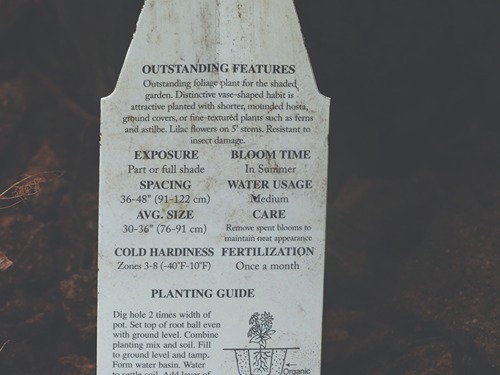
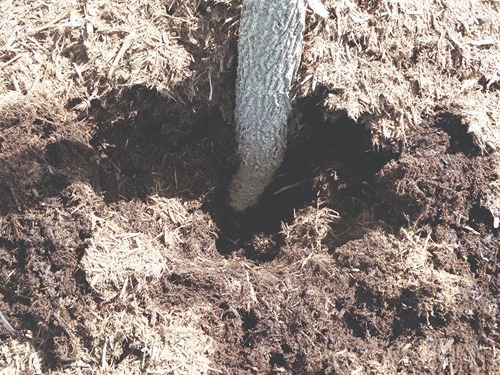
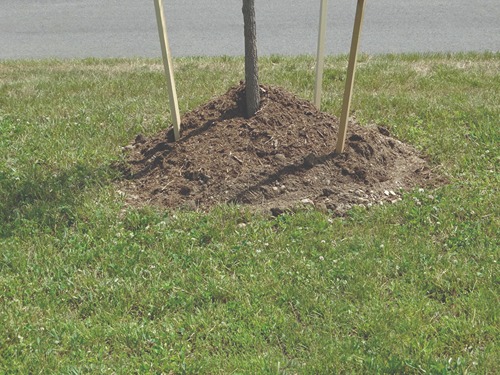
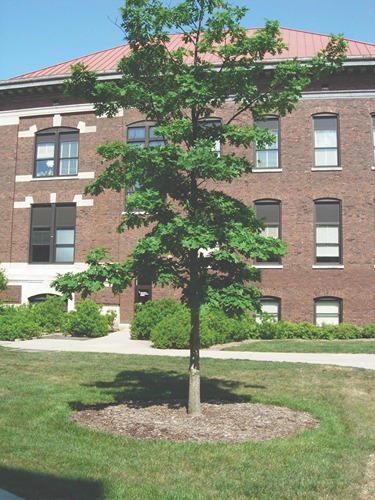
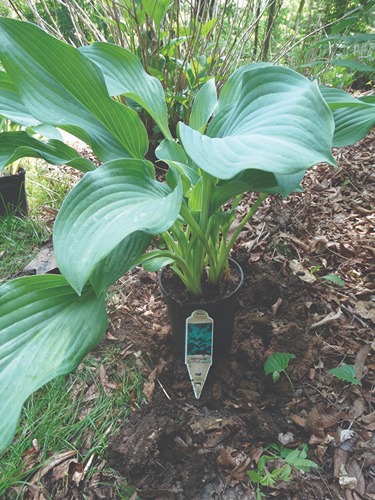

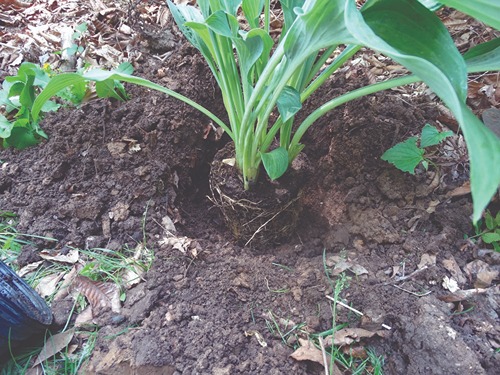
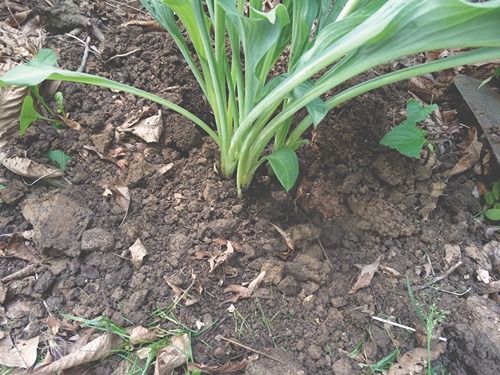
What’s the tag say? Pay attention to growth traits, site characteristics, and planting instructions if you expect the plants to remain healthy.
8. WATER NEW PLANTS AS NEEDED
It is especially important to adequately water new plants during the first season. It takes time for plants to grow sufficient roots and become established in the garden. The plants were pampered in their plastic pot or burlap wrap, watered and fertilized throughout their young lives. That means they were rather “tender” when you put them in the ground and they had to abruptly change from being pampered to surviving the harshness of the planting site environment.
If you want to kill plants or keep them unhealthy, then just forget about them after you put them in the ground. Yes, you watered them faithfully for a few weeks, but by midsummer there are so many other activities pulling you away from what needs to be
done in the yard. Watering new plants becomes tedious, and you leave plants to rely on natural rains. Newly planted plants can’t wait for the rain.

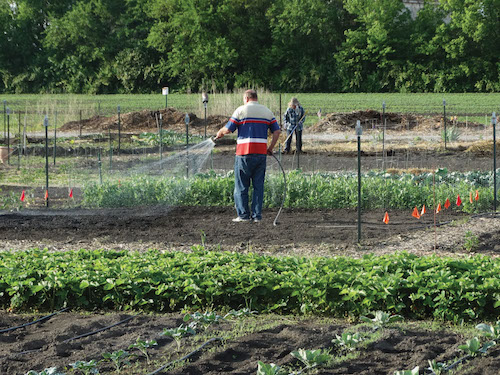
Water is the essence of life. It allows nutrients in the soil to be taken into the plant by the roots. Water brings the soil in contact with roots. Water provides the strength in the stems to keep the plant upright and to help garden vegetables mature. Without the right amount of water at the right time, plants suffer and may be more likely to succumb to pest pressures.
Drip irrigation and rain barrels are two methods that conserve water. Rain barrels help gardeners reduce their contribution to stormwater runoff, while providing a water source for irrigating ornamental garden plants. Every garden should have a rain gauge to track weekly rainfall.

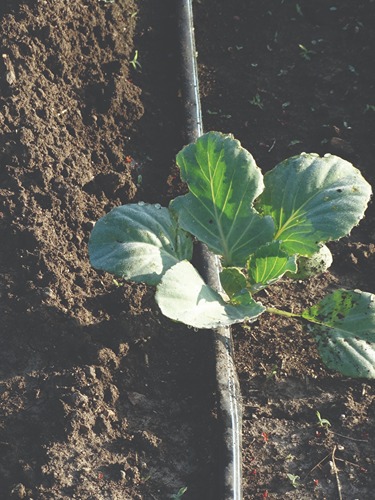

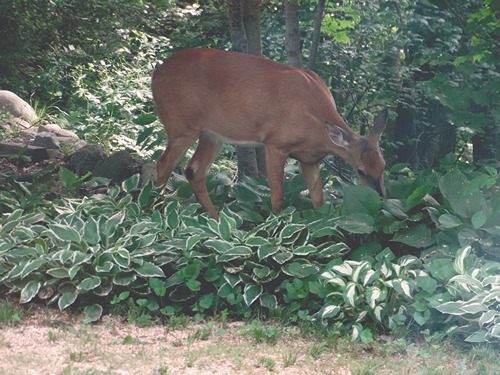


A doe and fawn caught in the act. Cute but destructive, deer are more than happy to feed on landscape plants.
Deer will continue to come day after day when they find good-tasting plants.
Pests Are in the Eyes of the Beholder
“Pest” is a very general term. It could mean anything that is unwanted in the garden or landscape. Pest is a term that has no biological significance, because whether something is a pest or not depends on whom you ask. Some consider a black rat snake in the garden good, because the snake eats things you would rather not have on the property. For others, a single snake can produce an anxiety attack. Or, some think colorful garden spiders and their orbs on a dewy morning represent nature’s best, while others see these spiders as unwanted pests. Some landscapers view the yellow flowers of dandelions as beautiful, but to others they are eyesores.
While chipmunks are fun to watch, they burrow under patios and sidewalks that can result in cave-ins.

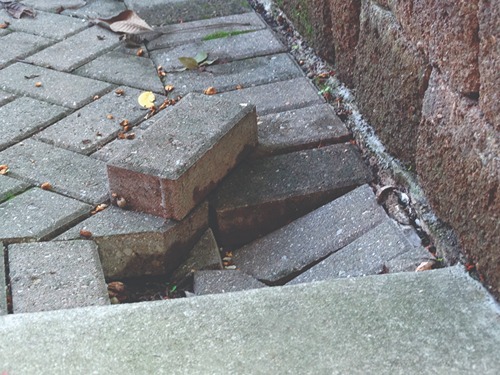
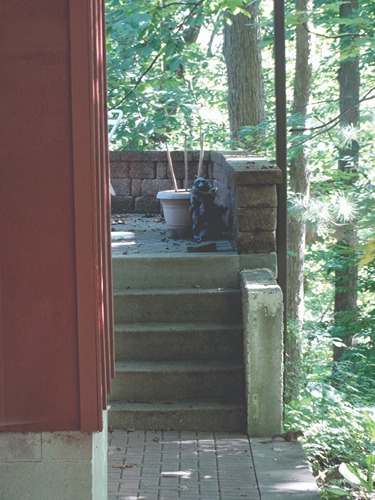


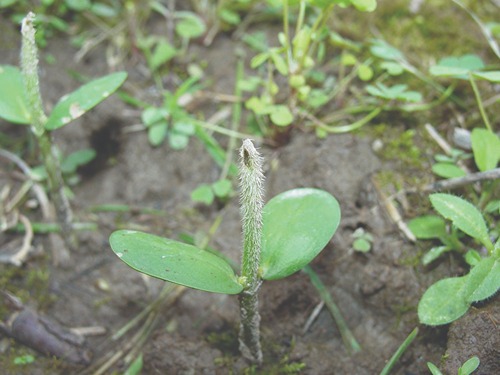
Rabbits are adorable, but these critters can chew the bark off woody ornamentals, which can girdle and kill the tree or shrub.
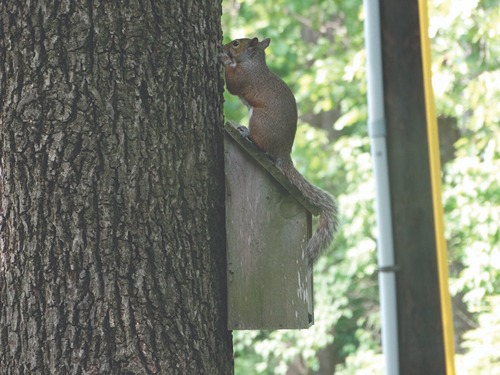
But squirrels can clean out bird feeders and quickly become a nuisance to bird watchers.
And when squirrels invade attics, homeowners quickly rethink their desire to attract wildlife
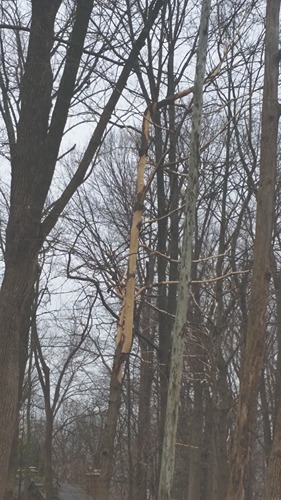
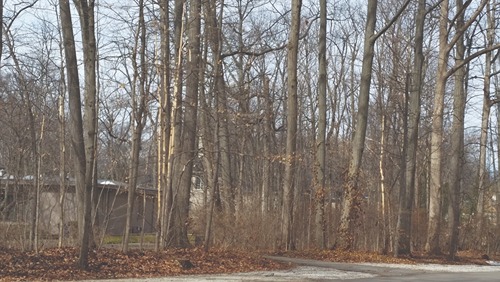

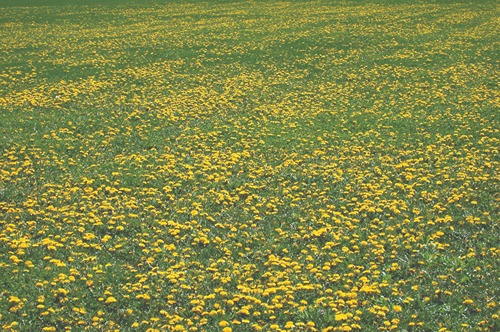

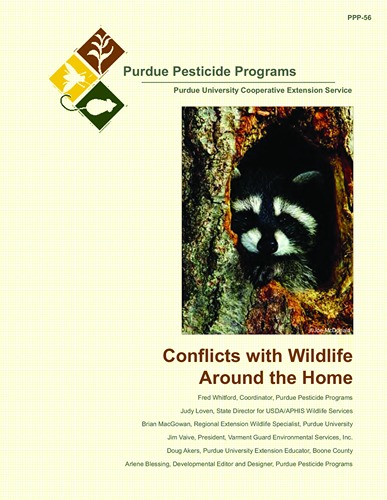 Find Out More More information about dealing with wildlife around the home is available in Conflicts with Wildlife Around the Home (Purdue Extension publication PPP-56), available from the Education Store (www.edustore. purdue.edu) and Purdue Pesticide Programs (ppp.purdue.edu)
Find Out More More information about dealing with wildlife around the home is available in Conflicts with Wildlife Around the Home (Purdue Extension publication PPP-56), available from the Education Store (www.edustore. purdue.edu) and Purdue Pesticide Programs (ppp.purdue.edu) Personalized Pest Management
In spite of your best efforts to choose the right plant and take care of it, insects, weeds, diseases, and the occasional mole, chipmunk, rabbit, or deer can cause problems in your landscape. It is inevitable that pests will try to attack some part of your plants: from the roots, to the brand new stems and leaves, to the flowers, vegetables, and fruit. The plants we place in the landscape and garden are a buffet to the horde
of pests just waiting for a free meal.
So what is a home gardener to do about all these pests?
A good answer lies in a concept called integrated pest management (IPM). IPM uses gardening science and common sense to manage pests. The goal of IPM is to manage pests in such a way that gardeners minimize their expenses and environmental effects to achieve levels of pest control that make them comfortable. IPM is built upon our ability to control various pests by using gardening science and common sense. IPM strategies create unfavorable conditions for pests, but maintain favorable conditions for plants. Successful IPM practices make conditions so unfavorable to pests that they cannot survive or they move to easier victims. IPM began in commercial farming. In farming, economics played a key role — what kind of economic return will I get if I do this, and what will my loss be if I do nothing? Home gardeners typically don’t measure success as profit and loss. But they do measure success in terms of what they want. That is, how much time, effort, and expense is a gardener willing to invest to manage a pest? Are you willing to let the pest take over your plant? Do you want to keep the plant all for yourself and allow no pests? Or are you somewhere in between? It’s important to remember that pests compete with us for our plants. A pest may be a caterpillar on a tomato plant, a disease organism (such as a fungus) on a sycamore tree, a patch of grass in a flowerbed, a tall tree under the utility line, or a weed in the driveway.

Aphids are common insects that feed on plant juices.
They do not always need to be treated unless they reach high numbers.
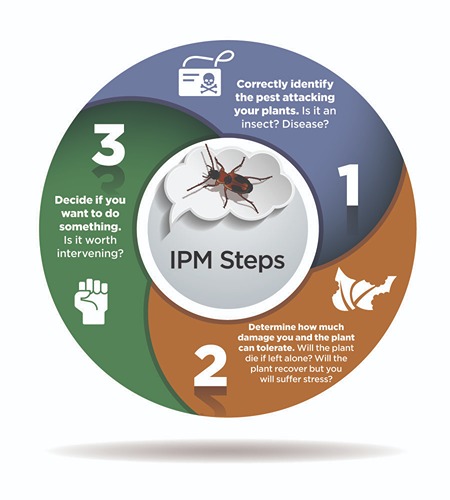
The preferred strategy in most cases is to evaluate and implement a variety of pest control methods. IPM combines various control methods to reduce the pest population and limit the damage to economically and aesthetically tolerable levels. Just as calling something a “pest” depends on your point-of-view, so “damage” will also depend on what you can tolerate.
The key to effective pest control is knowing what options are available, and making wise decisions about which control methods fit your personal goals. When you are dealing with a pest, there are three steps that will help you decide the most effective management options.
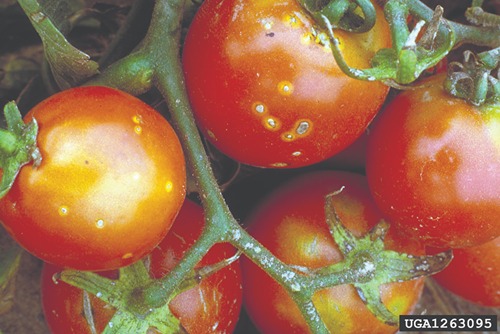
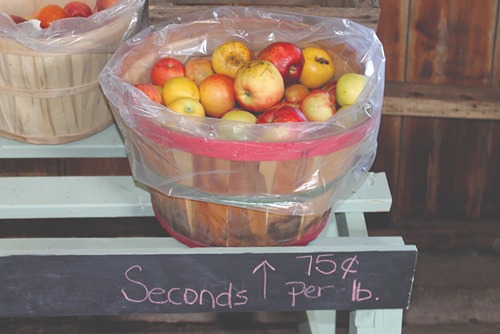
Unwanted microorganisms (fungi and bacteria) can cause tomato diseases. Heinz USA , Bugwood.org
1. Correctly Identify the Pest Attacking Your Plants
The first step in IPM is to accurately identify the pest and understand its lifecycle. Knowing your enemy’s weak points provides the information you will need to defeat it. If you don’t identify the pest correctly, you end up wasting your time and money. You might even make the problem worse.
You may also need to better understand the plant you are trying to protect, because once you understand the interaction between plant and pest, you improve the odds of figuring out how to alleviate the problem. Extension personnel, other gardeners, and garden center professionals are available to help you identify
the pest in question.

Knowing that a bagworm is attacking your plant will give you more effective management options. Eric R. Day, Virginia Polytechnic Institute and State University, Bugwood.org
Knowing that a bagworm is attacking your plant will give you more effective management options. Eric R. Day, Virginia Polytechnic Institute and State University, Bugwood.org
2. Determine How Much Damage You and the Plant Can Tolerate
The next step in IPM is to understand the biology of the plant you are trying to protect. For example, some plants quickly regrow after pests eat part of their leaves; other plants recover more slowly. In some cases, allowing a pest to eat the shoots may prevent flowering later. And if the pest attacks the blooms, the plant may not rebloom that year or produce fruit. Insects that feed on vegetables and fruits might create only a surface blemish; in other cases, insect feeding allows an entryway for fungi and bacteria. Borers left untreated in trees could kill the trees.
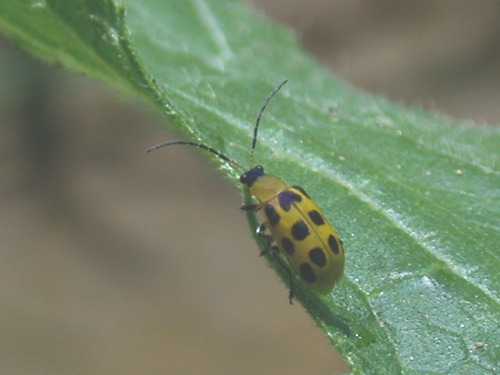
The ways different plants react to pests are more important than just aesthetics. If not addressed, the question is: “What will the pest do to the plant’s long-term health?”
A pest attack at a critical time might mean a plant will not be healthy enough to survive the winter. When you determine how much damage a plant can tolerate, plant health is more important than plant aesthetics,
but this too is in the eyes of the beholder.
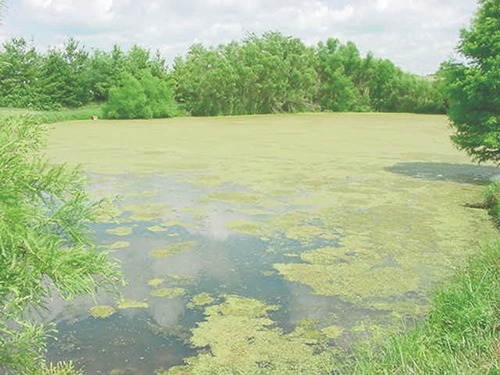
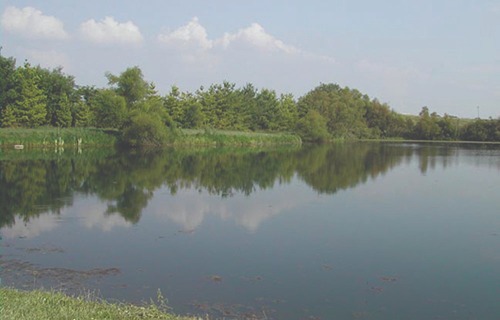
Weeds and algae in ponds can destroy habitat by crowding out native plants. Invasive weeds can also reduce fish populations and prevent access for recreational users.
3. Decide if You Want to Do Something
No one would tolerate a hornet’s nest near a child’s swing set or poison ivy in the yard. And there aren’t many people who would tolerate Japanese beetles devouring their favorite roses. However, a few weeds
in your lawn may not warrant control.
Obviously, what you can tolerate is personal. You have to know what you are we willing to live with and what you can’t tolerate.
Some gardeners don’t mind a few insects feeding on their plants because they consider the insects as
interesting as the plants. However, it’s fair to say that you won’t be as magnanimous if a few bugs multiply
to the point that they move on to devour your prized landscape plant.
We can typically tolerate (even like) a few of something. We can seldom tolerate a lot of anything.
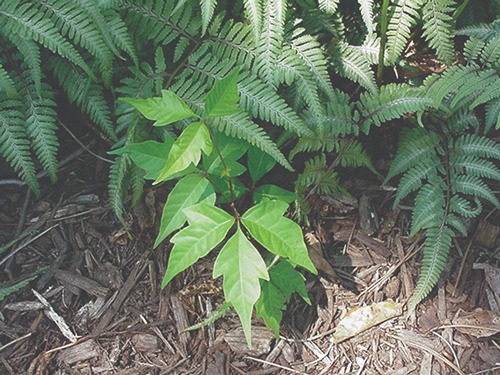
Choose Control Options that Fit Your Philosophy
Your goal is to reduce pest activity to a level that has the minimal potential for unacceptable plant
damage. Consider how the following strategies can reduce pest numbers and ultimately keep plants
attractive and healthy.
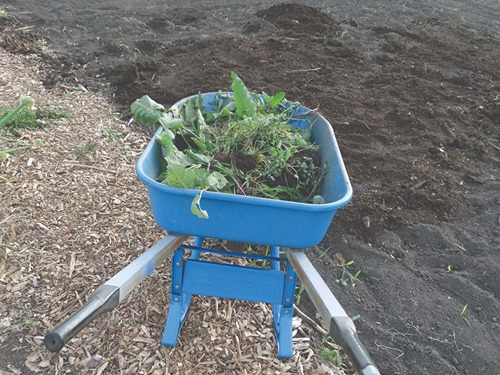
Maintain Healthy Plants
Healthy plants have a competitive edge on pests. For example, you can reduce weed problems (such
as dandelions and other broadleaf weeds) in a lawn of Kentucky bluegrass if you mow at a height of 3 inches rather than 2. That’s because many weed seeds need light to germinate. Mowing higher helps keep the light from reaching the soil where the seeds are laying dormant, ready to germinate. Mowing before weeds produce seed will reduce future populations.
Select Pest-resistant Cultivars
Some plants have a natural resistance to specific diseases and insects. This natural resistance can prevent problems before they start. If you like a plant’s foliage and blooms, then ask the garden center staff for cultivars that might be resistant to that insect, disease, or deer. Once again, it’s important to select the right plant for the right place.
Replace Problem-prone Species
If you have problems with pests attacking specific landscape plants year after year, then reconsider whether those are the kinds of plants you want in your garden.
Clean Up Plant Debris at the End of the Season
Many fungal plant diseases overwinter on infected leaves, fruits, and vegetables that remain on the ground. Spring winds and rain can blow or splash the disease spores back onto plants and start the disease cycle over again. Some insect pests overwinter in plant debris, too. Pick up this plant debris at the end of each growing season to prevent the disease cycle from starting over again the next spring.

Decisions Are Personal and Varied
There are many strategies that can help you reduce the effects of landscape and garden pests. Your pest
reduction plan will often require both a short-term and long-term strategy to control the pest. The first important strategies are always to pick the right plant for the right location and to properly plant and maintain it.
Ultimately, how much damage you can tolerate and the amount of pest damage often help you choose the best control option. If you need immediate results because the damage is extensive, you will likely choose a pesticide to control the pest. If you find the damage early and can be patient, then you may be willing to
try alternatives to control the pests (for example, hand picking hornworms off tomatoes). How you manage
the pest often depends on how much elbow grease and money you’re willing to invest to reduce pests.
Select the options that best suit the needs of the situation and what you expect from your plants. For example, do you require blemish-free apples or are you willing to accept some spots and worms? If you need spotless apples, you’ll need to prune overcrowded limbs to improve airflow and spray preventative fungicides (and possibly insecticides) on a regular schedule. If you are willing to eat the apples as they are, you may get by with fewer pesticides. Planting disease-resistant cultivars can also help reduce your reliance on pesticides.
You may often need to use more than one pest control method to be successful. Don’t be discouraged. It’s the same principle we use to keep ourselves healthy and ready to fight off infections and diseases. You eat the right foods in the proper proportions, watch your weight, exercise, and routinely visit the doctor — these are all part of preventative medicine that keep you healthy. Even so, you may still find a situation when you need to take medicine, such as an antibiotic to fight off a case of strep throat.


Understand that every tactic has advantages and disadvantages. Consider a case of Japanese beetles feeding on roses. What are the options?
You could do nothing. Beetle feeding doesn’t bother some people. Others will hand-pick the adult beetles off their plants and put them in soapy water. However, if you’re not there to remove the beetles, then the rose flowers and leaves become tattered. Still others might use an insecticide to kill the insects. A dust will surely kill the adult beetles, but that may leave you with an ugly “white” rose bush that is unacceptable and might hurt honeybees. And still other people avoid planting roses altogether since they know they have high Japanese beetle populations.
Here are five strategies that will help you reduce the effect of a garden pest.
 1. Exclusion One method of pest control is exclusion. This strategy is about denying the pest access to your plant. Use fences, row covers, and netting to keep pests out of your garden area. It is much easier to keep pests out than it is to try and control them once they are in your garden.
1. Exclusion One method of pest control is exclusion. This strategy is about denying the pest access to your plant. Use fences, row covers, and netting to keep pests out of your garden area. It is much easier to keep pests out than it is to try and control them once they are in your garden. 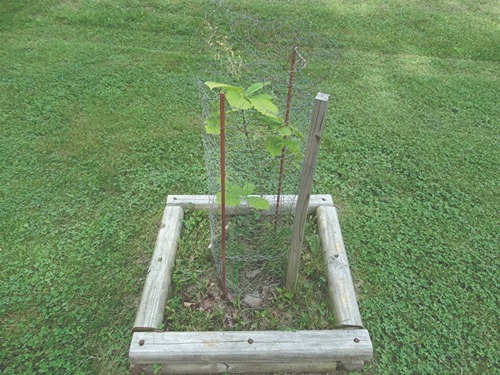 Using physical barriers to exclude pests will vary depending on what you are trying to exclude
Using physical barriers to exclude pests will vary depending on what you are trying to exclude 




Examples of other barriers to unwanted pests include squirrel guards on bird feeders and spreading straw mulch to control weeds.
2. Cultural Control practices change the environment or growing conditions to keep pests in check. Keep plants healthy so they are able to fight off diseases and insects. This begins with selecting the right plant for the right place — the right amount of sun or shade, the proper drainage requirements, and right overall climate. Cultural control also involves selecting insect- and disease-resistant plants, observing the recommended planting dates, and practicing proper sanitation in garden areas. Sanitation includes removing disease- or insect-infected plant material such as leaves, twigs, and branches so they are away from healthy plants — this helps prevent the spread of insects or diseases. Cultural control also includes improving the soil for maximum growth potential, mulching beds to reduce weeds, and properly watering and fertilizing plants.
 2. Cultural Control practices change the environment or growing conditions to keep pests in check. Keep plants healthy so they are able to fight off diseases and insects.
2. Cultural Control practices change the environment or growing conditions to keep pests in check. Keep plants healthy so they are able to fight off diseases and insects. 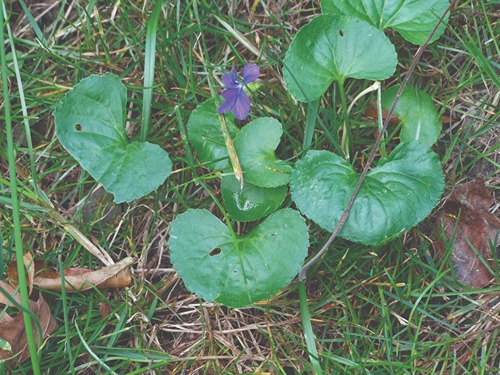 While wild violets are often considered lawn weeds, they can replace grass in the shade and provide ground cover. But they can spread into sunny areas where they may need to be controlled.
While wild violets are often considered lawn weeds, they can replace grass in the shade and provide ground cover. But they can spread into sunny areas where they may need to be controlled. 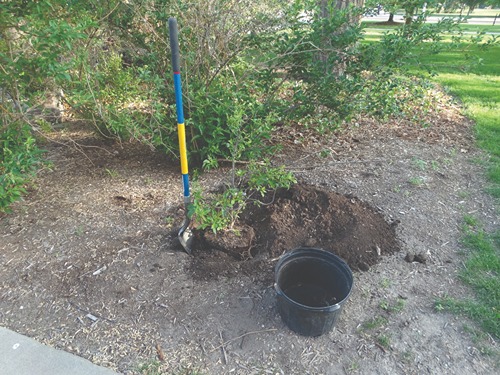
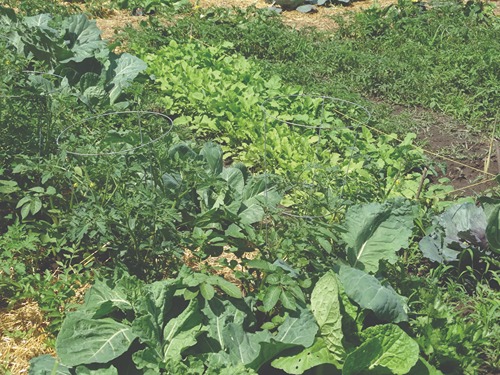 A well-planned vegetable garden maximizes space, allowing few bare areas for weeds to take root.
A well-planned vegetable garden maximizes space, allowing few bare areas for weeds to take root.  3. Biological Control Another pest control strategy is biological control.
3. Biological Control Another pest control strategy is biological control. 

 4. Mechanical Control Mechanical pest control methods
4. Mechanical Control Mechanical pest control methods 
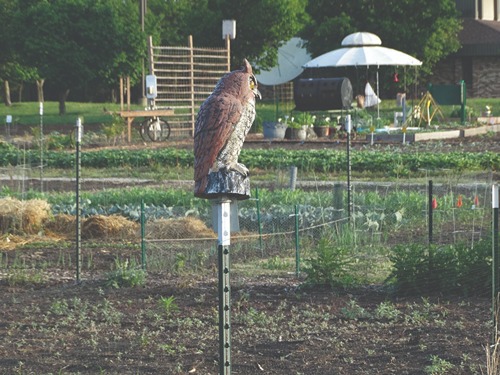
In most cases, using chemicals is the pest control method of last resort. Although pesticides are an
important component to control pests and improve the health of our plants, they aren’t always necessary.
Again, this is linked to pest biology. Gardeners
should try nonpesticide control methods first. You should resort to pesticides only after you have exhaustedother IPM strategies and you choose to act to prevent further damage.
Pesticides are the preferred solution for controlling certain unwanted pests, because they can control the problem before it begins. For example, you can apply a protective spray to prevent plant diseases. There are times when you discover pest damage at such an advanced stage or when pest numbers are so high that it is too late to use alternative management strategies. In such cases, pesticides may be the only effective method left as a rescue treatment.
Pesticides are important stopgap measures that allow you to get the pest under control and keep the plant healthy. If you have to use a pesticide, it is important for you to consider the pest and plant to see if you can prevent the problem from coming back next year.


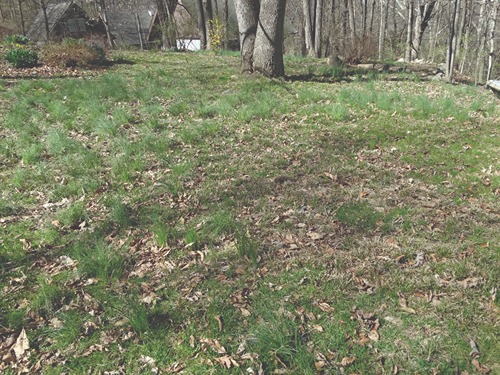
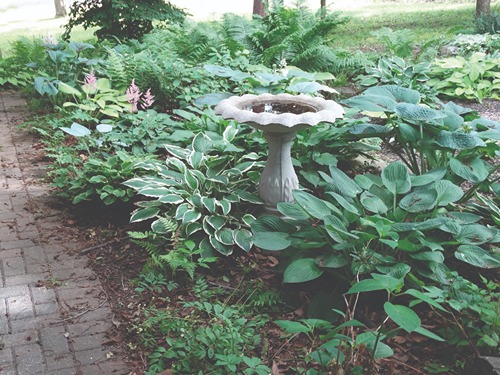
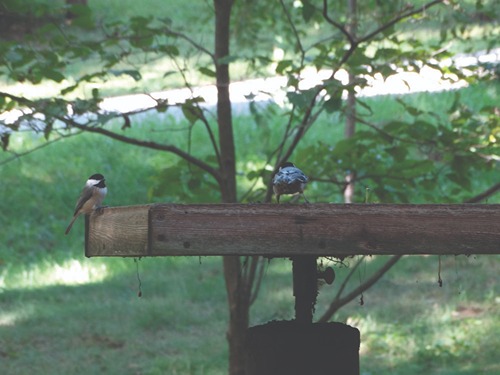
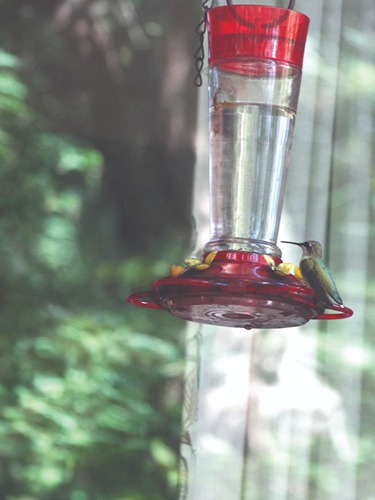
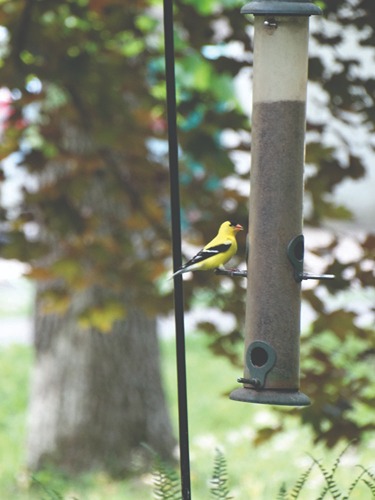
When using any pesticide, it’s important to consider the surroundings and other animals. For example, keep the pesticide from drifting on bird feeders, their food, and water. You also want to be sure you don’t harm beneficial insects like honeybees or other pollinators.
Pesticides Classified by What or How They Control
“Pesticide” is a very broad term that covers thousands of different chemicals in the same way that “medicine” is a broad term that covers a wide range of health-care products. If you say, “I am using a pesticide,” you are saying very little about what you are using.
Pesticides are chemicals that control pests. Pesticides control weeds, plant diseases, insects, rodents, and other pests. Pesticides work by disrupting some part of the pest’s life process. For example, a pesticide might
prevent an insect from reproducing, prevent a weed from performing photosynthesis, repel a rabbit, or
prevent a fungal disease from infecting a plant leaf.
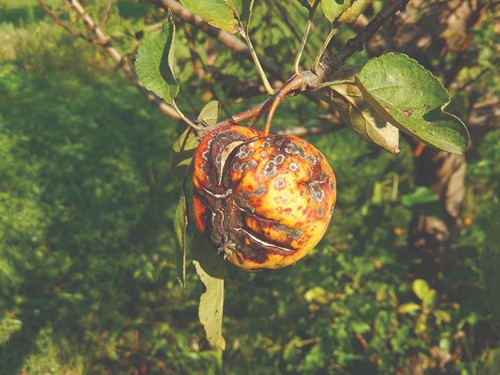
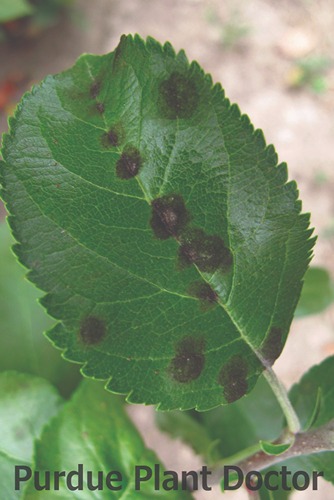 Apple scab damage to an orchard’s leaves and fruit.
Apple scab damage to an orchard’s leaves and fruit. 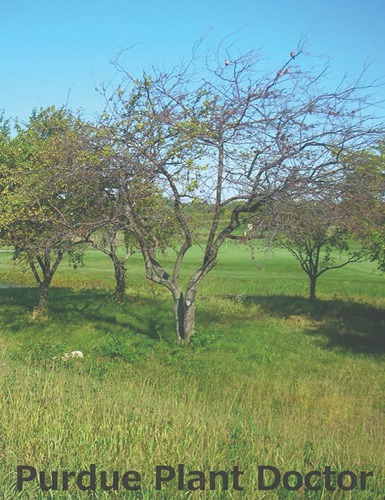
Each pesticide is designed to control a select group of pests, such as weeds, insects, or diseases. Insecticides control insects; herbicides control weeds; fungicides control some fungal diseases. No one pesticide will kill all types of pests. For example, a pesticide that protects your apple tree against codling moth will not control apple scab on the tree. An exception might be some oils that are labeled for insect and disease control on fruit trees and pesticides that are sold as a mixed combination of insecticide and fungicide.
Pesticides are grouped and named based on what they control. This is why it is important to correctly identify the pest you are trying to control so you will choose the proper pesticide. Insecticides are not intended to kill weeds, and herbicides are not meant to kill insects. Neither prevents diseases. A single insecticide will not control all insects, nor will one fungicide control all plant diseases. Each chemical is formulated to control certain pests.


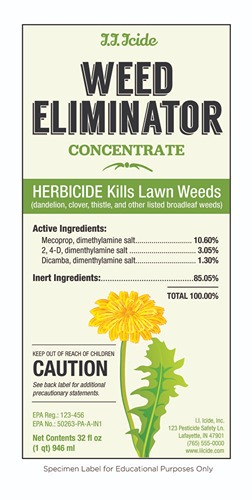
The Label Directs Safe, Effective, and Legal Use
The pesticide label includes all of the written information on the pesticide package. It includes the front label and the often-extensive information on the back of the package.
The label tells you how to use the product:
• Safely, so you do not hurt people, children, and pets and do not damage the environment or the plants you are trying to protect.
• Effectively, so that you control the pest and protect your property, garden, and landscape plants.
• Legally, because labels aren’t just guides,they are the law!
All parts of the label are equally important when using a pesticide.
With few exceptions federal law requires pesticides to be registered (licensed) with the U.S. Environmental Protection Agency (EPA) before they can be sold. The exceptions are known as 25b products (www.epa.gov/pesticides). The EPA must ensure that the pesticide, when applied according to label instructions, can be used with a reasonable certainty that it will not harm human health and will not pose unreasonable risks to the environment. Using pesticide products comes with important responsibilities. All pesticides, including “natural” or “organic” formulations, must be handled safely.


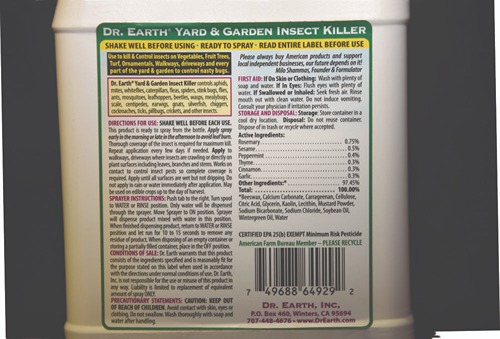
An example of a 25b product, which does not have to be registered with the EPA.
Pesticides available to homeowners are safe if the homeowner handles, stores, uses, and disposes of them properly. A pesticide label includes the safe, legal, and appropriate ways to use a product. A label describes the necessary information about safety, pesticide mixing
and handling, storage, spill cleanup, proper disposal, and first-aid. Pesticide labels are written to provide the most benefit with the least amount of risk to people, pets, and wildlife.
Why is it so important to follow the directions on the label? Bad things can happen if you don’t read and follow label instructions:
• You might use the wrong pesticide concentration and harm your plants.
• You might fail to wear appropriate protective clothing and expose yourself to the pesticide.
• You might use a pesticide that won’t control the pest (it is not listed on the label) or use it at the wrong time. Consequently, the pesticide doesn’t control the pest and it will continue to injure your plants.
• You might accidentally kill beneficial organisms like bees needed for pollination or preying mantises that feed on pest insects.
• You might use the pesticide in a way that injures people, pets, wildlife, or the environment.
• You might use a pesticide in your vegetable garden and then find out the product is not labeled for use on vegetables. You will have to discard the produce because the vegetables may have unwanted pesticide residue that has not been evaluated for human consumption.
Garden center employees get updates about pesticides. Ask garden center employees to recommend products they would use to control the pest you have — you might bring in a sample of the pest or a photo to show them. Then, make sure to read the label to see that you can comply with what will be required.
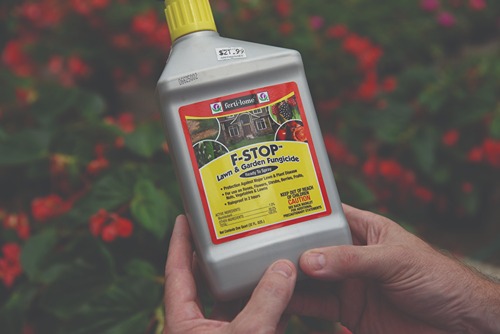
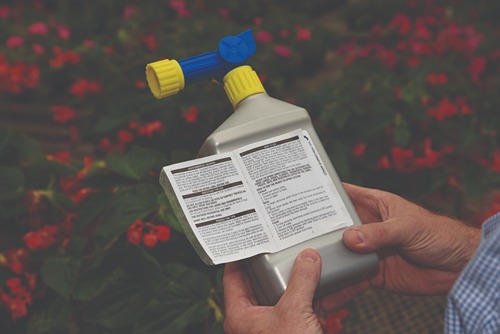
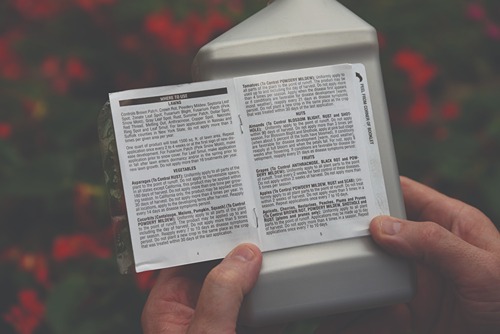
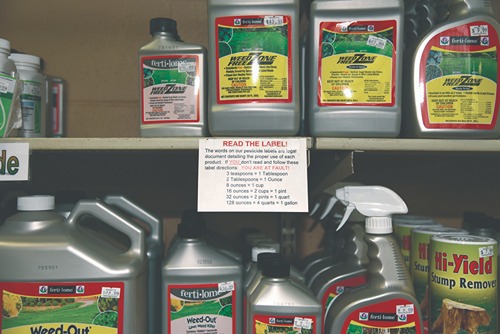
Directions for Use: It is a violation of Federal law to use this product in a manner inconsistent with labeling.
NOT FOR USE ON TURF BEING GROWN FOR SALE OR OTHER
COMMERCIAL USE AS SOD, OR FOR COMMERCIAL
SEED PRODUCTION OR FOR RESEARCH PURPOSES.
Do not apply this product in a way that will contact any person, pet, either directly or through driff. Keop poople and pots out of the area during application. Do not allow people or pets to enter the treated area until dusts have settled. Non target plants can be adversely affected by this product.
‘The Label is the Law’ — More Than a Catchy Phrase
Labels aren’t just guides, they are the law! The first sentence on every pesticide label in the Directions for Use section makes the label a legal document: “It is a violation of federal law to use this product in a manner inconsistent with the labeling.”
The law requires pesticide users to follow all instructions on the label including application methods and rates, storage, and container disposal.
Each state has an agency with people trained to investigate the misuse of pesticide products. In Indiana, the Office of Indiana State Chemist investigates pesticide misuse. If you fail to follow pesticide label directions, state agencies can fine you for misusing or misapplying the pesticide.
In some cases, not following label directions can lead to lawsuits when the product you used allegedly injured a person or damaged their property. Everyone who uses a pesticide should read the label thoroughly before any application and follow label instructions when applying the pesticide.
Check Your Inventory Before You Buy Pesticides
Before heading to the store to buy a pesticide, spend a few minutes looking through what you have on hand. Knowing what pesticides you already have can help reduce unnecessary purchases that could cause problems down the road with disposing of outdated products. Checking your inventory can also save you money by reducing what you spend on pesticides.
Pesticide Shelf Life
One of the most difficult questions to answer concerns a pesticide’s shelf life. Unlike milk and other perishable products, pesticides generally are not labeled with expiration dates. Should you use a product you purchased several years ago? Fortunately, most products are stable for a long time when stored in their original containers under optimal temperatures. If the product has been stored correctly (usually between 40°F and 100°F), it will likely still be effective.
With some herbicides and insecticides, you can test the product’s effectiveness without compromising the health of your plants. Shake the product well. Dilute a small amount as directed on the label and apply. If the herbicide kills or injures the weed in a week or the insecticide kills the insects on the surface of the plant, then it is still effective.
There are two scenarios where waiting to see if the product is still effective is a bad idea.
First, never use older insecticides when the insect pests are feeding inside the plant (such as emerald ash borers). In such cases, you can’t determine if the insecticides have worked because the insects are hidden.

Second, you apply fungicides to protect plants from a disease, so you must apply them before plants are infected. Applying an old fungicide and then waiting a week to see if it is still effective may give the disease enough time to seriously harm your plants. Since fungicides don’t cure diseases, spraying again with a newly purchased product won’t help your plants.
Don’t take a chance with questionable fungicides that may have become outdated — purchase fresh product to deal with plant diseases.
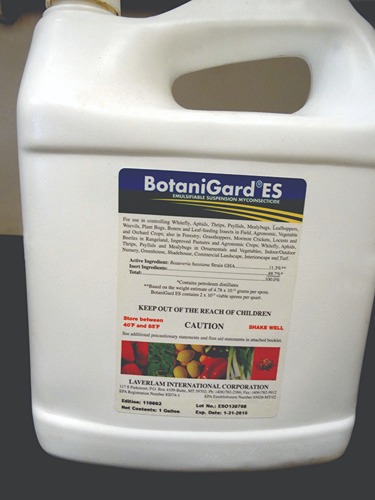
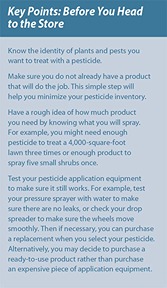 Key Points: Before You Head to the Store
Know the identity of plants and pests you want to treat with a pesticide.
Make sure you do not already have a product that will do the job. This simple step will help you minimize your pesticide inventory.
Have a rough idea of how much product you need by knowing what you will spray.
For example, you might need enough pesticide to treat a 4,000-square-foot lawn three times or enough product to spray five small shrubs once.
Test vour pesticide application equipment to make sure it still works. For example, test your pressure spraver with water to make sure there are no leaks, or check your drop spreader to make sure the wheels move smoothly. Then if necessary, you can purchase a replacement when you select your pesticide.
Alternatively, you may decide to purchase a ready-to-use product rather than purchase an expensive piece of application equipment.
Key Points: Before You Head to the Store
Know the identity of plants and pests you want to treat with a pesticide.
Make sure you do not already have a product that will do the job. This simple step will help you minimize your pesticide inventory.
Have a rough idea of how much product you need by knowing what you will spray.
For example, you might need enough pesticide to treat a 4,000-square-foot lawn three times or enough product to spray five small shrubs once.
Test vour pesticide application equipment to make sure it still works. For example, test your pressure spraver with water to make sure there are no leaks, or check your drop spreader to make sure the wheels move smoothly. Then if necessary, you can purchase a replacement when you select your pesticide.
Alternatively, you may decide to purchase a ready-to-use product rather than purchase an expensive piece of application equipment. Selecting Pesticides at the Store
Selecting a product to control a specific pest can be daunting. Garden centers, farm supply stores, and hardware stores have aisles lined with pesticides. When you decide on a product, you will need to factor in cost, package size, ease of use, and safety.
Take time to read and study pesticide labels before you buy a product (just as you would read plant tags before deciding which tree to purchase for your yard). Your salesperson can help direct you to the section that deals with your problem.

Choosing Between Ready-to-Use and Concentrates
Many liquid pesticides are available as premixed, ready-to-use products, often referred to as RTU products. The upside of using these products: they are convenient because you don’t need to handle a concentrated pesticide, you don’t have to worry about accurately diluting and mixing the pesticide, and you don’t have leftover pesticide concentrate. RTU products are often packaged in containers that help you
accurately apply the product. For example, a spray nozzle is often part of the packaging.
The downside of using RTU products: they are often expensive. You need to determine whether the benefits of RTU products outweigh the additional cost.
Pesticide concentrates are often less expensive than RTU products on a per gallon basis, however, the price of a single bottle of concentrate may be more than a single bottle of RTU product. A small bottle of concentrate often makes more diluted pesticide than you may use in three, four, or even five years. To use the product, you must handle concentrated pesticide, which increases the danger of contaminating yourself or the environment. At the end of the five years, you might be left with pesticide that may or may not work effectively. Purchasing product only to discard it several years later may cost you more than purchasing an RTU product.
If you use pesticides infrequently or have a very small yard, RTU products may make sense for you. If you know you will use a pesticide frequently or have large areas to treat, purchasing a concentrate may be more economical. Even then, you may have a choice of several container sizes. Remember, the goal is to have no leftover pesticide at the end of the growing season. Calculate how much product you really need before your purchase.
Key points: Selecting Pesticides at the store
You may need to read and study several pesticide labels before deciding which product to buy.
This list should help:
- Is the product labeled for treatment on my plants? The label should list the plant or plant type (for example, crabapple = or at least, tree). An ornamental crabapple could be treated with a pesticide labeled for trees or woody plants. However, pesticides used for vegetables and fruit must be labeled for the specific crop.
- Is the pestlisted on this product label?
- Is the product ready-to-use (RTU) or is mixing required?
- Do lhave the necessary application equipment for this produce
How potentially hazardous is the product to me and my family? Check the signal word (see page 40).
What personal protection equipment (such as safety glasses and gloves) do I need? Dol have these at home, and are they in working condition? - Does the label have warnings about fish, birds, and bees? Can I follow those instructions at my specific site?
- How long after application must I wait to re-enter where I have applied the pesticide? Products may say to stay out of an area until sprays have dried. or give a specific re-entry time such as four hours.
- How soon after using the product can / harvest and eat the vegetables or fruit? You will need to write down when you applied the pesticide so you can follow the harvest restrictions (often called the ore-harvest interval, or PHI
Signal Words Help Select the Least Toxic Product
It’s not difficult to find the safest product to use. The signal word on a pesticide label tells you the product’s acute (short-term) toxicity to humans. Signal words tell you the potential toxicity of a product if it is eaten, absorbed through the skin, inhaled, or if it irritates eyes or skin. The EPA assigns signal words to registered pesticides based on the toxicity of all the substances in the product (both active and inert ingredients).

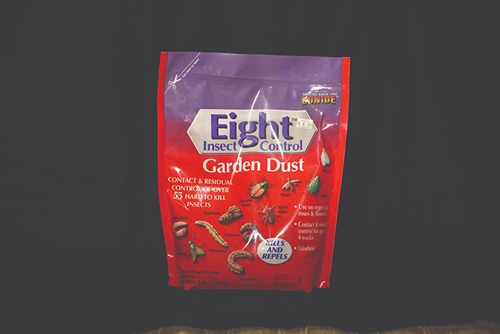
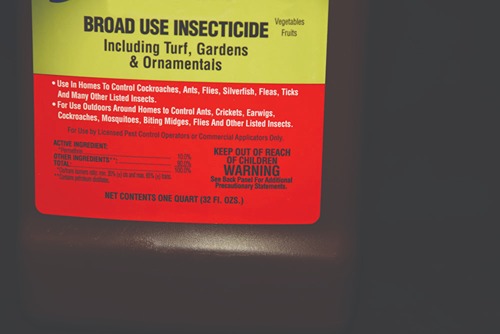
The signal words are:
- CAUTION for slightly toxic products
- WARNING for moderately toxic products
- DANGER for highly toxic or corrosive products
Whenever possible, select products with the signal word CAUTION. And products with the signal word WARNING are preferable to products marked with DANGER. Signal words allow us to compare the
potential human toxicity of one product to another.
Although some people think that products labeled DANGER or WARNING will be more effective against pests than products labeled CAUTION, the signal word does not in any way reflect a product’s ability to control a pest.
The signal word only tells you the potential of the product to harm you and your family. But even
products labeled DANGER can be used safely as long as you follow the directions on the product label. By choosing a pesticide labeled CAUTION rather than WARNING or DANGER, you reduce the potential for harm to you, your family, pets, and neighbors.
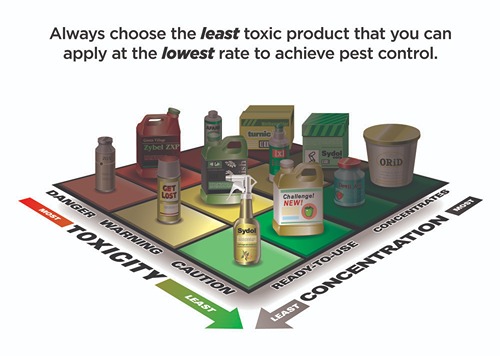 Buy What You Can Use
Buy What You Can Use
Buying only the amount that you can use is good practice when purchasing pesticides. It’s one thing to stock up on certain items at the supermarket to take advantage of a good deal, but you never want to stock up on pesticide products. It is a mistake to choose a pesticide solely on price comparison: buying the most product for the least unit cost is not always the best option.
You should only buy large quantities of pesticides when you know you will use all of the product based on your past experience, and you have a safe place to store the larger quantity. If you will not be able to use or store all of the product, purchase a smaller amount even though it may be more expensive per unit.
Purchasing a quart of pesticide concentrate might save money initially, but if you ultimately have to dispose of the excess, it will likely become less economical and impractical than the higher-priced, smaller quantity. Some pesticide concentrates (such as multipurpose fruit tree sprays) are packaged in small containers and require only a few tablespoons of product per gallon of water. If you have only a few fruit trees, it might take you decades to use an entire quart. And that doesn’t even begin to consider that storing the product that long is undesirable and that it loses its effectiveness.
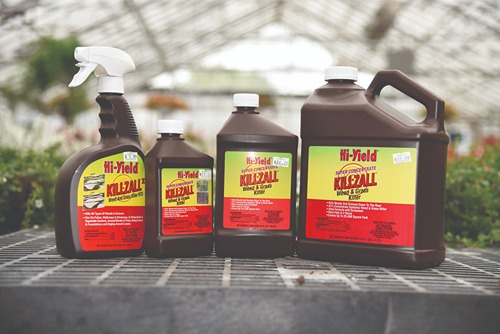 When you buy a pesticide, be sure only to purchase what you will use in a single season.
When you buy a pesticide, be sure only to purchase what you will use in a single season. 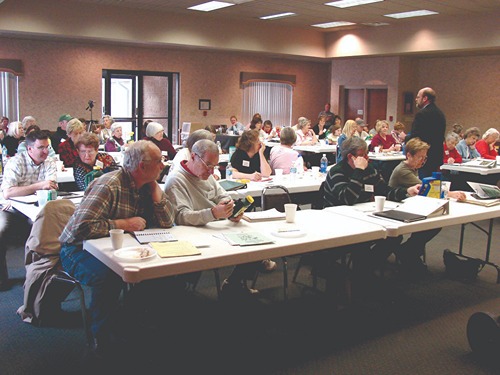 Gardeners learning how to read a label. Always read the labels on all chemical products. Synthetic, organic, and natural products all include instructions about how to use them effectively, safely, and legally.
Gardeners learning how to read a label. Always read the labels on all chemical products. Synthetic, organic, and natural products all include instructions about how to use them effectively, safely, and legally. 
Be Prepared for an Emergency
A poisoning can happen quickly! One minute a mother was watching her toddler playing and laughing, and just minutes later she found him in the garage sitting in a puddle of herbicide. Somehow he had been able to pull the container from a lower shelf, unscrew the lid, and drink an unknown amount.
Many people initially react, “My child would never do this.”
However, poison control centers handle thousands of calls from parents every day to help children who
have been exposed to medicines, personal care products, pesticides, household cleaners, and poisonous plants.
How would you react if your child got into a pesticide? Do you have emergency numbers in a central location?
Do you know who to call first? And do you know what to do while waiting for assistance?
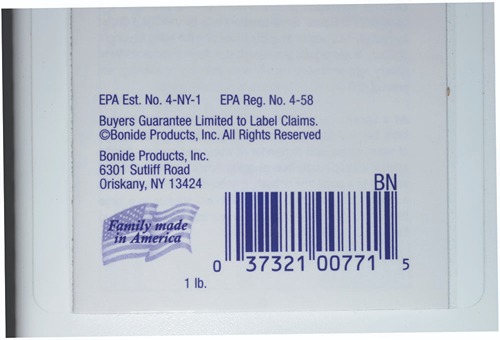
EPA Registration Number
In case of any emergency, the first thing a poison control physician will want to know is the EPA registration number on the front or back label. This is why it is always important to maintain the integrity of pesticide
labels. All information on a label is important, or it would not be there! If a pesticide label begins disintegrating with handling, find a copy of the label online, print it out, and attach it to the container. You can typically find a replacement label on the manufacturer’s website.
An EPA registration number (EPA Reg. No.) is an important identification code that helps emergency responders quickly access information about the pesticide. An EPA registration number is unique to the product formulation, so products with different brand names may be sold under the same registration number if they have the same formulation. EPA registration numbers are unique to each formulation, like a Social Security number is unique to each person.
Emergency Contacts — Seconds Matter
Even when you are careful, pesticide spills, pesticide exposures, and other medical emergencies can occur with any pesticide. Write down emergency numbers and personal medical information if you have not already done so. Copy the page and post them where everyone in your family can find them.
Contact emergency medical personnel (usually by calling 911) in case of pesticide poisoning. Put the emergency number on your phone’s speed dial and teach everyone in your family, including children, how to use it.
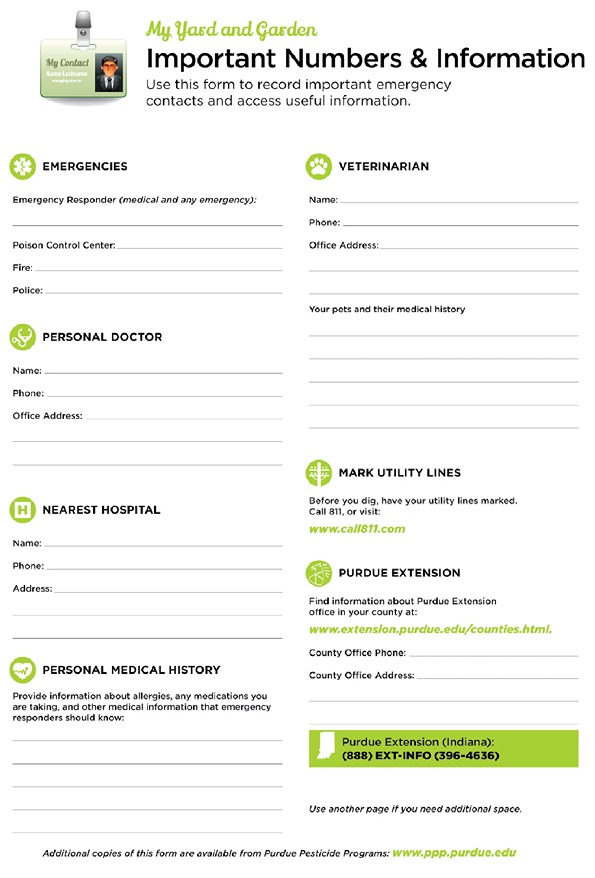
How do you know if you have pesticide poisoning?
You may have mild poisoning if you feel fatigued, dizzy, or nauseous after you’ve applied a pesticide. You may have severe poisoning if you are sweating, experiencing stomach cramps, vomiting, diarrhea, or blurred vision after a pesticide application.
If you get any pesticide in your eyes or on your skin, immediately flush with plenty of water. If burning continues, call the poison control center, your personal physician, or your local emergency room.
Don’t wait until the next morning to call emergency personnel. Call when you first notice symptoms. Although these are general signs of any illness or heat stress, you cannot rule out pesticide poisoning if you used pesticide products earlier.
There is a national toll-free number for local poison control centers:
(800) 222-1222
There is no charge for calling the 800 number, and you will be connected to the local poison center, no matter where you are in the United States.
Poison Control for Pets
You also should include your veterinarian’s phone number on your emergency list. If you suspect your pet may have pesticide poisoning, you can get help by calling your veterinarian.
There also is a Pet Poison Helpline:
(855) 764-7661
Pet Poison Helpline charges a fee for their services.
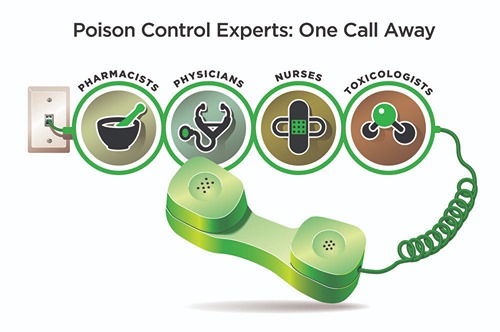
What Should You Do if You Spill a Pesticide?
Accidents happen. If you ever spill a pesticide, consult the label for proper cleanup procedures. Make sure you protect yourself by wearing the appropriate personal protective equipment listed on the product label (or at
a minimum, a long-sleeve shirt, long pants, closed shoes, and gloves.)
Cleanup procedures for liquid herbicides might include using an absorbent material (such as cat litter). For dry products, you might just use a broom. Follow label instructions for how to dispose of liquid spills or take the spilled materials to the local department that handles hazardous household waste. You can apply dry products to areas of your yard as originally intended.
The National Pesticide Information Center (NPIC) provides information about handling pesticide spills and can tell you how to contact the manufacturer if you have additional questions: npic.orst.edu.
Think Before and During Application
When you apply the pesticide it is time to put the information found on the label to use. Controlling the pest and doing it safely requires you to pay attention to label details throughout the process.
Do the Math
Before you apply any product (pesticide, fertilizer, or anything), you need to do the math first. Determine the size of the application area, and then calculate how much product you need to apply to just that area.
These calculations are important. You want to apply the correct amount of pesticide. Applying too much wastes money, adds unnecessary chemicals to the environment, and may damage your plants. Applying too little may not control the pest or protect your plants from damage.
Personal Protective Equipment (PPE)
Pesticide labels typically include the personal protective equipment (PPE) you should wear while handling the product. At a minimum, you should always wear long pants, long-sleeve shirts, socks, and closed shoes (not sandals) when handling any pesticide. It is always recommended that you wear chemical-resistant gloves and safety glasses. These simple precautions will keep the chemical off your skin and out of your eyes. Read pesticide labels to know exactly what you are required to wear.
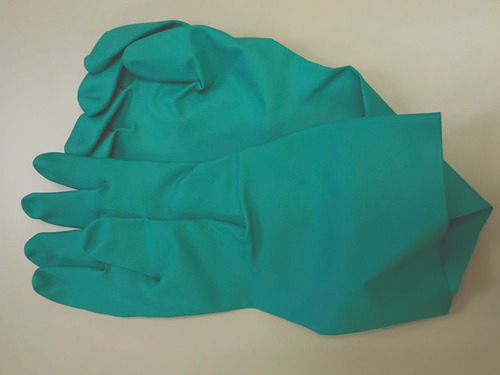 Gloves and safety glasses are your best friends when handling any pesticide.
Gloves and safety glasses are your best friends when handling any pesticide. 
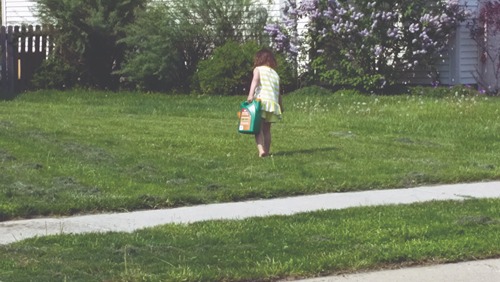 Common sense may not be so common anymore. Disregarding label instructions can lead to problems
Common sense may not be so common anymore. Disregarding label instructions can lead to problems 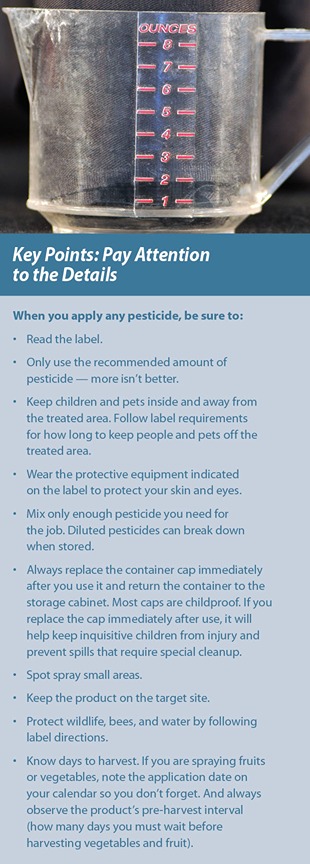
Spot Treat Small Areas
When you only need a pesticide product in a specific area or on certain plants, apply pesticides only in the area where you need them. Spray individual weeds scattered around a lawn or flowerbed; don’t treat the whole yard or entire bed. Spot treating reduces the risk of exposing nontarget plants and insects. Spot treating also significantly reduces the amount of pesticide you use, so it saves money by reducing the amount of pesticide you need.

Keep Pesticides Where You Want Them
One of the risks of using pesticides is the potential for the product to end up on nearby nontarget plants as
well as on birdbaths, bird feeders, swing sets, or other outdoor structures. Pesticides that reach nontarget areas can damage your plants and expose wildlife, children, and pets to pesticides.
Nontarget plant problems caused by accidental herbicide exposures are the most common. Herbicides that accidentally land on your food crops or ornamental plants can spot or distort leaves, reduce yield, or even kill the plants.
When pesticides travel through the air to areas where they are not wanted, it is called drift. It is called particle drift when the wind moves liquid spray droplets. Wind may move the droplets as they are applied, or irregular gusts may pick up droplets as they fall.
To reduce particle drift:
- Apply pesticides when winds are calm or a slight breeze is blowing away from plants that might be injured.This is especially important when spraying for weeds in a lawn that borders a flowerbed or vegetable garden. Some labels will specify optimal wind conditions.
- Adjust equipment so droplets are large.Use low pressure to create large droplets that fall close to the end of the spray nozzle. The wind is less likely to move large droplets. However, very large drops may fall off the leaves of the plant you want to treat rather than stay on them to control the pest. Your goal is to make the drops as large as possible while keeping them on the plants you are spraying. Spray a few leaves, check to make sure the pesticide is staying on the leaves, and then adjust the nozzle to make the drops larger or smaller.
- Do not use pesticides when temperatures are high and humidity is low.Under such conditions, large droplets will evaporate as they fall, becoming small droplets that the wind can easily move. Also, at high temperatures (such as above 90ºF), some pesticides can harm plants they are supposed to protect.

- Keep the application equipment close to the area you are treating. This way, there is less chance the pesticide will go where it is not wanted.
What should you do if you know pesticide droplets landed on the wrong plant? Don’t panic, but act quickly. Immediately wash the product off the leaves with plenty of water (well past the point of run-off) before the pesticide has a chance to enter the plant and cause damage. Make sure you also rinse off pesticides that land on automobiles, birdbaths, swing sets, and other outdoor structures.
Product labels provide information about how to use pesticides correctly to safeguard birds, wildlife, and plants.
Disposing of unused or unwanted pesticides also is important. Improper disposal can injure nonpest animals. Never dump pesticides down the drain (indoors or out) or pour them on the ground. Doing so can contaminate water and soil.

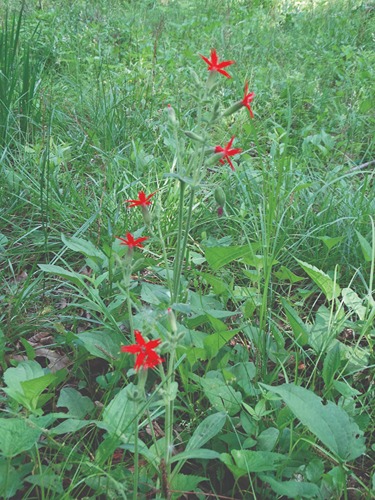 You can always create a little patch of wild where you allow native plants to grow. Wild areas can provide a sanctuary for pollinators.
You can always create a little patch of wild where you allow native plants to grow. Wild areas can provide a sanctuary for pollinators. 


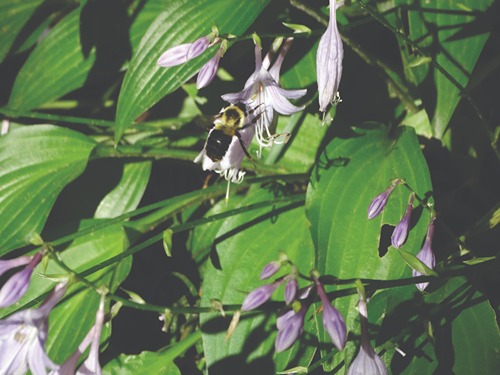
Plant flowers to provide pollen and nectar for bees and other pollinators. However, do your homework to make sure the flowers are attractive to honeybees, bumble bees, monarchs, and native pollinators. Protect pollinators by using pesticides only when absolutely needed, and restrict application to times when pollinators are not actively foraging.
Finish the Job by Cleaning Up
After you apply any pesticide, make sure to clean up. Always wash yourself immediately after applying any type of pesticide. Wash your arms, hands, face, and anywhere you may have come in contact with the pesticide. Always use plenty of water and soap.
Store Pesticides Safely
You can return unused granular pesticides to their original containers. If you used a metered hose-end sprayer, you also can place concentrated liquid pesticide in the original container. Return the pesticides to your pesticide storage area.
If you diluted a liquid pesticide, you cannot return the unused portion to the original container. You cannot store it as a diluted pesticide because most dilutions lose activity quickly.
So what should you do with leftover diluted product?
Never pour leftover pesticides down the drain or into the sewer. Instead, apply the excess to a site listed on the label. For example, if you have leftover broadleaf lawn herbicide used to treat dandelions in a lawn, then apply the leftovers to a lawn. Apply leftover fungicide that protects fruit trees from disease to fruit trees. This may mean spraying plants you have already treated.
To a child, containers with pesticides may look like the food and drinks they consume every day — regardless
of any markings you may put on them. Don’t make things even more confusing. Never store leftover
pesticides in food containers like milk jugs, fruit juice cartons, or plastic soda bottles. Children won’t know they shouldn’t drink the liquid in the container.
Every pesticide label includes the warning, “KEEP OUT OF REACH OF CHILDREN,” in capital letters, usually immediately above the signal word. This is the same whether the chemicals are pesticides, medicines, or household cleaners. Don’t do anything to make these products attractive to children.
Clean Application Equipment
Always clean your application equipment before you put it away. If you applied a granular pesticide, completely empty the spreader.
Rinse liquid herbicide sprayers with water three times. Add water to the sprayer and shake well, then apply the rinse water in the same way you did the pesticide, so spray nozzles are also rinsed. You must apply the rinse water to a site listed on the label, but do not apply it to the plants you just treated with the pesticide. Doing so can dilute the pesticide or wash it off the plant. If your only option is to respray the same plants, let the pesticide dry on the plant (about 12-24 hours just to be sure) before applying the rinse water.
Clean Yourself
If you wear disposable gloves, turn them inside out as you remove them (grasp the cuff and pull it down over your hand to turn the glove inside out.). Put the gloves in a sealed plastic bag for later disposal in your household garbage.
If you wear reusable gloves, wash and rinse your hands thoroughly while still wearing the gloves. You may find it convenient to put a bar of soap next to an outside faucet to make this initial wash-up more convenient.
Remove, hang, and allow the gloves to dry. Do not put gloves in your washing machine. When dry, store gloves in a closed container (such as a resealable plastic bag or plastic container) in your pesticide storage area.
After removing your gloves (any gloves), wash your hands and arms with water and soap to remove any
product you may have contacted.
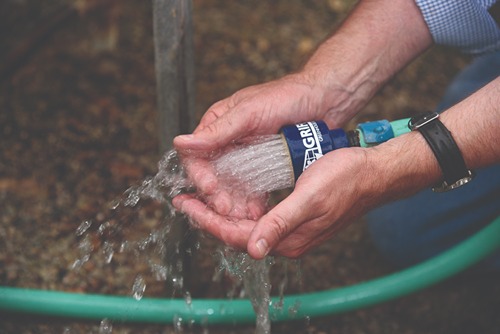
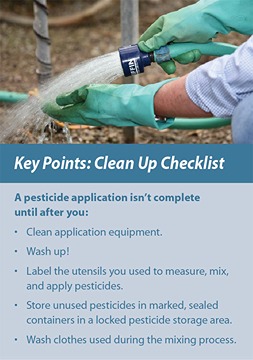

Wash Your Clothes
Wash any clothes you wore during the pesticide application. Wash them in hot water and detergent
and separate from the rest of the household laundry — this is a good recommendation for any clothes you
wear while doing yard work.
If you get concentrated pesticide on your clothing or your clothing becomes saturated with pesticide during application (for example, you were sprayed with pesticide from a broken hose), it is best to discard the clothing.
If you cannot wash your clothes immediately, remove them, and then place them in a large plastic
bag. Most people do not want to mix their garden clothes with regular clothes. When you are ready to
put them in the washing machine, use the plastic bag to handle the clothes rather than touching them with
your bare hands (or use a clean pair of gloves). If possible, dry clothing on an outdoor clothesline instead of in the dryer.
Properly Dispose of Unwanted Pesticides and Containers
If you plan carefully, you will purchase only pesticides you are willing and able to use, and only the amount
of pesticide you can use in a single season. If you plan carefully, you will not need to find ways to dispose of old, unused pesticides.
However, if you do need to dispose of unwanted pesticides, make sure you do so in a way that safeguards you, your neighbors, and the environment. Look for local tox-away days or ask your solid waste district office for information about how to properly dispose of pesticides. In Indiana, you can find your solid waste district office on the Association of Indiana Solid Waste Management Districts website
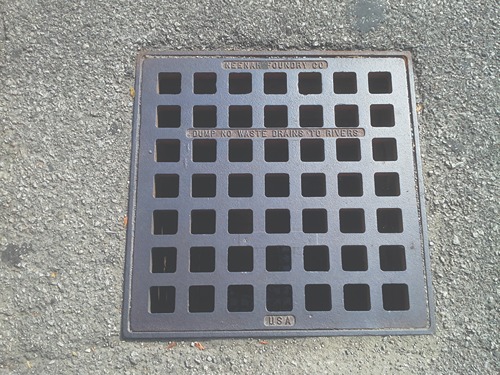
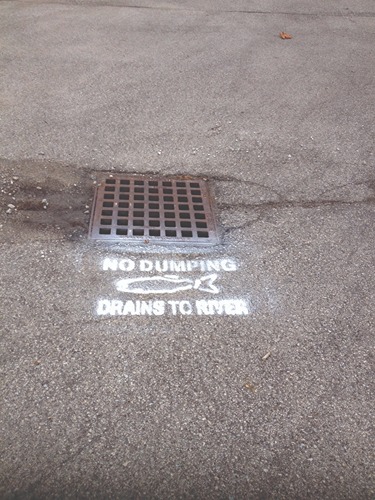
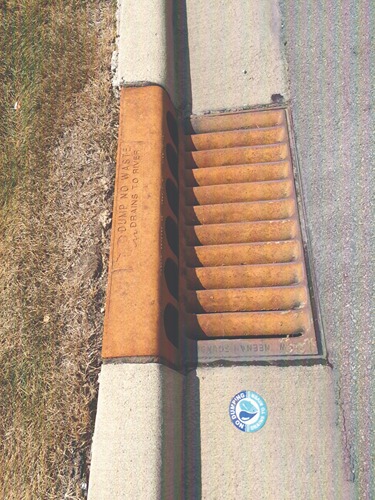
Improper Disposal
When disposing of pesticides, remember to avoid bad practices:
- Never pour liquid pesticides down the sink, toilet, or curbside gutters.
- Do not throw pesticides away with the garbage.
These actions can contaminate groundwater, streams, and lakes. Many pesticide labels specifically state that these actions are prohibited. Instead, take the pesticide in its original container to your local hazardous household waste department if one is available in your community. Some cities also hold tox-away days and
will accept pesticides.
If you need to dispose of an empty pesticide container, check the bottom of the container for the recycling code (the number in the triangle). Many pesticide containers are labeled 2 HDPE. Most recycling programs accept these containers, but you might want to be sure by calling first. If the recycling program will not take them, discard the containers in the garbage. Before discarding or recycling, clean containers by rinsing them three times as described earlier for spray applicators.
The best time to rinse an empty, concentrated liquid pesticide container is when you use up the last of the pesticide in the container. Add water to the empty pesticide container, shake, and pour the water into the sprayer. Use this water as mix water to fill the sprayer with water adding the required amount of the pesticide. Repeat twice.
If you are done with the application, fill the sprayer with the rinse water and apply the very diluted spray back over the plants designated on the label. Cut or puncture the container so it cannot be reused. The rinsed container is now ready for disposal or (if allowed) recycling.


Troubleshooting Why It Didn’t Work
Successful gardeners are excellent observers of what control methods work and what do not. Are you happy with the results? If not, you will need to troubleshoot to try to figure out what went wrong.
Why didn’t the method work as well as you expected? Is there something you need to change to improve the method? Did you select the correct pesticide? Did you follow the label directions? These are all important questions to ask.
To prepare for the next growing season, it is a good practice to keep notes about your garden. These notes should include when you observed the pests, how you managed them, and so on. Then around the same time next season, you should begin scouting for those pests. If you get an early start on control, you might be able to prevent the problem from becoming a crisis. Early detection gives you time to consider more control options.
There are many reasons a pesticide does not control pests as well as you hope. However, one of the leading causes is applicator error — failing to follow label instructions and using the product incorrectly.
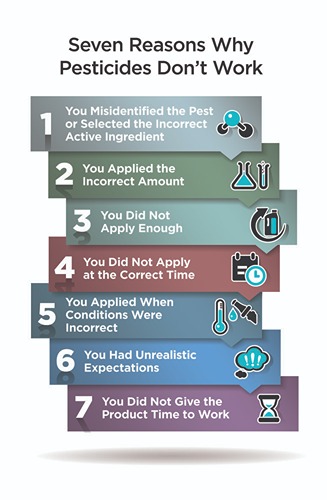
There are seven common reasons why pesticides fail. Pesticides may fail because you:
Misidentified the pest or selected the incorrect active ingredient. In other words, the pesticide you applied is ineffective against the pest you want to control. Remember, insecticides do not control weeds. Even a specific herbicide may not kill every weed. Read each pesticide label to make sure it lists the pest you want to control.
Applied the incorrect amount. To be effective, you must correctly dilute and correctly apply the pesticide product. If the label says the container will cover 5,000 square feet, but you apply it over 10,000 square feet, you may dilute the product to such a level that it is no longer effective.
Did not apply enough. Some products need to be applied several times over several weeks to control the pest. For example, you may need to apply fungicides to control disease every seven to 10 days for as long as favorable environmental conditions exist. That’s often because, over time, the fungicide can degrade or wash off a plant. Also, as new leaves appear, they need additional fungicides to be protected.
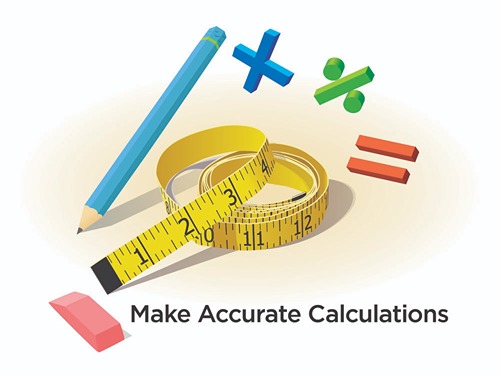
Did not apply at the correct time. Some products work best when you apply them at a certain time of
year. For example, pre-emergence herbicides that control crabgrass are only effective when you apply them in early spring before crabgrass seeds germinate. And some insects feed for only a short time. They may no longer be active (or even around) by the time you notice plant damage. When that’s the case, a pesticide application is unnecessary, because it is too late to control the pest. Some insects and weeds are susceptible to pesticides only when they are small and immature. To control fungal infections (such as black spot on roses) you must apply pesticides before the infection occurs. If you do not apply a pesticide at the correct time, it won’t control the pest.
Applied when conditions were incorrect. Some herbicides are only effective if the plant is actively
growing (for example, herbicides usually do not control weeds that are under drought stress). You may need to water other pesticides into the soil before they become effective. Still others only work if you apply them within a specific temperature range.
Had unrealistic expectations. Controlling a pest will not turn a discolored leaf green or fill in the holes insects have already made. Using an insecticide does not mean you will never see another insect near your plant. Fungicides cannot cure a disease if the infection has already occurred, they can only protect uninfected tissue.
Did not give the product time to work. Don’t expect instant results, especially with herbicides. It may take 7-21 days for herbicides to control weeds. Sometimes, gardeners are impatient. Some products, particularly systemic pesticides, need time to circulate in the plant or must be ingested by an insect pest before taking effect.
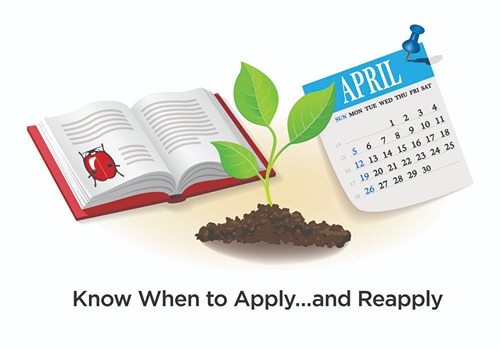
Preventing the Problem from Recurring
After you control a pest, break the cycle. Ask what you need to do to prevent the problem from happening again. If you don’t change your gardening practices, the problem is likely to continue from one year to the next.
Consider these preventative management suggestions:
- Inspect plants frequently to detect problems before they get out of control.
- Replace the pest-prone plant with a variety that can better resist insects and diseases.
- Move the plant to a more optimal spot for growth (sun vs. shade, moist vs. dry soils).
- Use mulch to reduce weeds and conserve soil moisture.
- Mow cool-season grasses to a height of 3 inches.
- Fertilize regularly and at the proper time. Be sure not to over-fertilize.
- Plant a diversity of plants to help prevent pest populations from building up over many seasons.
- Rotate crops in your vegetable garden so disease and insect pest populations don’t have a chance to build up.
- Water early in the morning and use drip irrigation where feasible to keep foliage dry to reduce plant diseases.
- Allow adequate spacing around plants to maintain good air circulation.
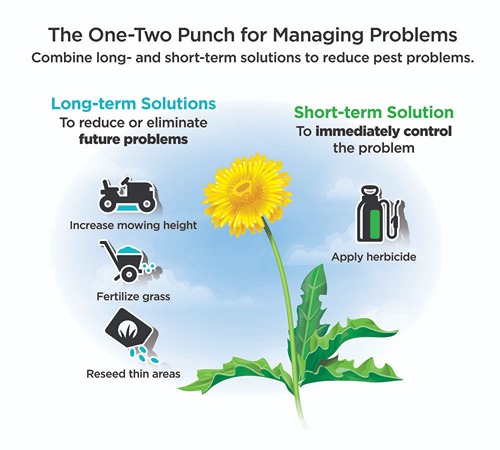
Conclusion
When you keep landscape and garden plants healthy through proper care, you give them an advantage to compete with insects, diseases, and weeds for space and nutrients. When you remove weeds and debris from the landscape, you help eliminate overwintering sites for diseases and insects. These and other practices are important for preventing pest problems.
Occasionally, pests get the upper hand despite all our efforts! In such cases, you may need to use a pesticide
to bring the system back into balance before resuming a nonchemical approach to prevention and control. Pesticide use in the lawn, landscape, and garden provides many benefits, but there are also risks. You must handle pesticides with caution and understanding.
Safety is the most important consideration when you use pesticides — not only for you but also to your family, the environment, and wildlife. Choose the product that best fits your needs. Use pesticides according to instructions on the label, and reread the label before every use, even if you have used the product before and think you know it by heart.
Minimize the risks and maximize the benefits of using pesticides. You can reduce your risk by selecting the least toxic product (CAUTION) to do the job and minimizing your exposure (for example, by wearing proper protective equipment). Think safety first, which means always read the label first.
If you have questions about pesticide use and safety, consult your local extension educator. In Indiana, you can find your Purdue Extension educator at extension.purdue.edu or call (888) EXT-INFO.
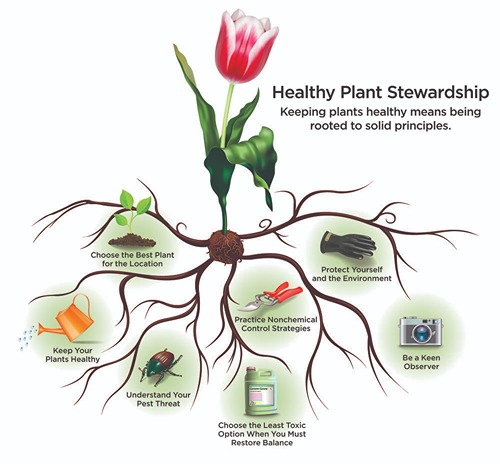
Acknowledgments
Work on this publication was partially supported with outreach funding from the Indiana Water Resources Research Center at Purdue University. Thanks to Dawn Minns for graphic design. Thanks also to those who
offered constructive comments during the development of this publication.
Disclaimer
This publication is intended for educational purposes only. The authors’ views
have not been approved by
any government agency or business. The publication is distributed with the understanding that the authors are not rendering legal or other professional advice to the reader, and that the information contained herein
should not be regarded or relied upon as a substitute for professional consultation. The use of information contained herein constitutes an agreement to hold the authors, companies or reviewers harmless for liability, damage, or expense incurred as a result of reference to or reliance upon the information provided. Mention
of a proprietary product or service does not constitute an endorsement by the authors or their employers. Descriptions of specific situations are included only as hypothetical case studies to assist readers of this
publication, and are not intended to represent any actual person, business entity, or situation. Reference
in this publication to any specific commercial product, process, or service, or the use of any trade, firm,
or corporation name is for general informational purposes only and does not constitute an endorsement, recommendation, or certification of any kind by Purdue University. Individuals using such products assume responsibility for their use in accordance with current directions of the manufacturer. Any picture of a product used in a way not intended by the manufacturer is neither endorsed nor condoned by the authors or the manufacturer.
Find Out More
Purdue Pesticide Programs offer a number of publications on related topics to help you manage your operations better. All publications are available from The Purdue Extension Education Store: (888) EXT-INFO (496-4636)
Find Out More
Purdue Pesticide Programs offer a number of publications on related topics to help you manage your operations better. All publications are available from The Purdue Extension Education Store: (888) EXT-INFO (496-4636)
 Find Out More More information about dealing with wildlife around the home is available in Conflicts with Wildlife Around the Home (Purdue Extension publication PPP-56), available from the Education Store (https://edustore.purdue.edu/) and Purdue Pesticide Programs (ppp.purdue.edu).
Find Out More More information about dealing with wildlife around the home is available in Conflicts with Wildlife Around the Home (Purdue Extension publication PPP-56), available from the Education Store (https://edustore.purdue.edu/) and Purdue Pesticide Programs (ppp.purdue.edu).  pesticides and home, lawn, and garden
pesticides and home, lawn, and garden 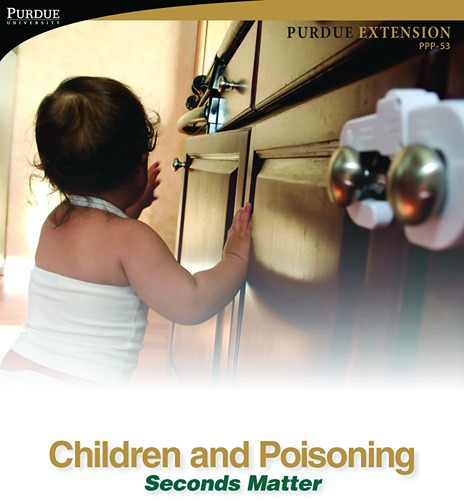 Find Out More More information about preventing child poisoning is available in Children and Poisoning: Seconds Matter (Purdue Extension publication PPP-53), available from the Education Store (www.edustore.purdue.edu)
and Purdue Pesticide Programs (ppp.purdue.edu).
Find Out More More information about preventing child poisoning is available in Children and Poisoning: Seconds Matter (Purdue Extension publication PPP-53), available from the Education Store (www.edustore.purdue.edu)
and Purdue Pesticide Programs (ppp.purdue.edu). 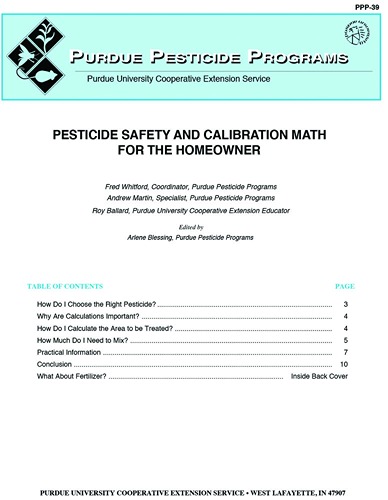 Pesticide Safety and Calibration Math for the Homeowner
Pesticide Safety and Calibration Math for the Homeowner  Pesticides and Personal Safety
Pesticides and Personal Safety  Pesticides and Personal Protective Equipment
Pesticides and Personal Protective Equipment 